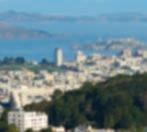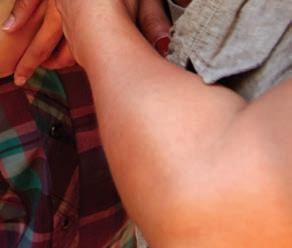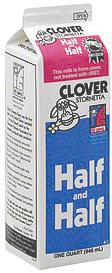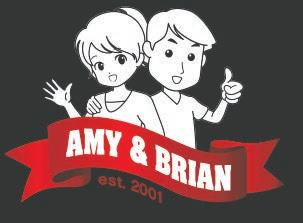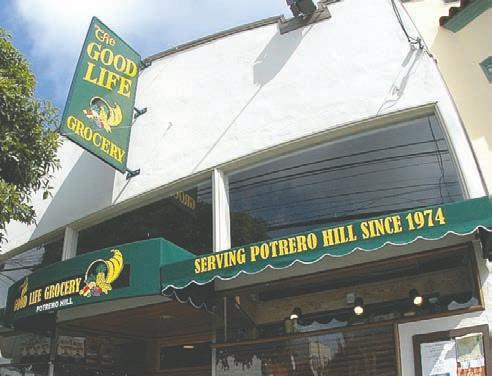Third Rail: Railway-Themed Saloon



Third Rail: Railway-Themed Saloon


What’s larger than the Bahamas, Cuba, Haiti, Belize, Aruba and Jamaica combined, but not as much fun to frequent on a sunny day?
The answer is the City and County of San Francisco’s budget, which is larger than the combined budgets of those six nations. It’s also bigger than 13 states and, at $11,100 per citizen, every American city per capita except Washington D.C.
Since Ed Lee took office in 2011, which coincided with the end of the Great Recession, CCSF’s budget has increased from $6.4 to $9.6 billion. About half of that, $4.7 billion, goes to salaries and benefits, as the number of full-time municipal employees rose by 5,090 during the period, eclipsing the roughly 1,000 lost during the recession.
Soaring costs of living triggers the need for higher salaries for City employees, and larger cost of living
BY JACOB BOURNEFacing a $400,000-plus budget deficit, the New Generation Health Center, located at 625 Potrero Avenue, had been slated to close last summer. The Center, founded and operated by the University of California, San Francisco more than 20 years ago, provides reproductive health services to mainly low-income young adults in a confidential environment. It’s significantly reliant on philanthropy, funding from which dwindled in recent years. Patient visits have also declined, further reducing revenue. With New Gen’s termination looming, the San Francisco Department of Public Health planned to refer its patients to other public or nonprofit clinics.
However, reproductive rights advocates believe New Gen is vital, its services difficult to replicate at clinics geared for a wider range of age groups. Last year, Joi Jackson-Morgan, executive director of 3rd Street Youth Center & Clinic, created an online petition, Stop UCSF From Closing New Generation Clinic, addressed to UCSF Chancellor Sam Hawgood. The petition garnered 5,262 signatures, and described New Generation as, “A safe haven in a City where navigating and accessing the health care system is nearly impossible.”

Spurred by community pressure, UCSF decided to continue funding the youth clinic for another year.
Rebecca Jackson, MD, chief of service for OBGYN at Zuckerberg San Francisco General Hospital, stressed the importance of the clinic’s freestanding nature,
separate from the hospital campus, to facilitate privacy for youth. Its services include pregnancy testing, contraception, sexually transmitted disease testing and treatment, and health exams. In addition to the clinic, New Generation conducts sexual health outreach to San Francisco schools, for which Jackson has received abundant positive feedback from the community.
“The decision was made to close New Gen last year because we were facing a significant funding deficit,” explained Jackson. “The University decided to help keep it open for another year to give us time to search for another alternative. In response, a monthly working group was created to explore different alternatives.”
The favored option is a collaboration between New Generation and the Homeless Prenatal Program, located less than a block away at 2500 18th Street. Although details of the proposed partnership are being negotiated, the tentative plan is for New Generation to move into and lease
space in the 18th Street building, a shift that could offer the clinic greater security, since HPP owns the 26,800 square-foot property. However, the change will only likely occur if New Generation is able to raise sufficient funds to demonstrate financially security for the next five years. Renovations on the 18th Street building to accommodate New Gen’s relocation won’t begin until HPP’s board of directors deems the clinic financially solvent.
Jackson explained that with New Gen’s lease expiring and rent rising, it’s infeasible to continue at the Potrero Avenue location, which is a larger space than the clinic needs. The move to HPP’s facility would allow New Gen to be in a smaller area more suited to operational requirements, with lower overhead and staffing costs.
Martha Ryan, HPP’s executive director, founded the nonprofit organization in 1989 to promote safe deliveries and healthy babies for low-
Public comments on a draft environmental impact report for the University of California San Francisco’s proposed Child, Teen and Family Center, at 2130 Third Street, have included strong opposition to the facility’s design and location. The project, currently in the design phase, is slated to go before the University of California Regents this May for a go/ no-go decision. If approved, construction is anticipated to start by early 2018, with a targeted completion the first quarter of 2020.
The property is owned by the Lisa & John Pritzker Family Fund; the Center would be operated by the UCSF Department of Psychiatry. The development team consists of SKS Partners, LLC and Prado Group, working alongside Pfau Long Architecture and ZGF Architects. Hathaway Dinwiddie Construction Company is the general contractor.
“The Child, Teen and Family Center is designed to address the three
unique street environments adjacent to the building: the larger transitoriented nature of Third Street, the transition of 18th Street, and the more residential nature of Tennessee Street,” said Lee Ishida, construction manager, SKS Partners.
The project site is one block from the UCSF-Mission Bay campus. An existing office building and surface parking lot would be demolished to make way for the new development. The Center would be three to five stories, with 150,000 gross square feet consisting of outpatient clinics, research areas, educational spaces, offices and retail. The structure would have a varied height of 45 to 68 feet, with a subterranean parking garage.
The building’s layout features a central atrium with natural light that’ll function as the heart of the Center, connecting the 18th and Tennessee streets building entrances. Floor plans are designed for easy circulation and fostering human interaction, gatherings
Former Potrero Hill resident, Edward Lortz, who recently left the Hill after 30 years, is advocating that long-time community members be allowed to remain on social media site Nextdoor even if they live elsewhere. “I have historical knowledge and opinions about Potrero Hill…,” said Lortz. “At least 100 people here know I’ve gone, and some have reported me to ND. I have been open to ND and have even emailed the support group about my departure, but to date they have not thrown me overboard. When I changed my address to a commercial place, Nextdoor’s algorithm thought I was a new resident. I propose a Legacy or Grandfather category with a, say, 15-year past residency requirement, for which a departing resident could REQUEST the Grandfather category. I thought of adding a non-commenting membership, but that negates the ability to contribute past knowledge. I probably should not even bring this up, but those of you who know me know I always open my mouth when I really should STFU.” It’s an interesting question; are you still a neighbor if you no longer live next door? Physically, certainly not, but socially? Given that cyberspace is everywhere, where do participants need to be?
Tacos and Coffee
Glena’s opened in February at 20th and Third streets, offering tacos and other such tasty fare. The eatery is open Monday to Saturday, 11 a.m. to 3 p.m. Dinner. Additional weekend hours will be available after the restaurant secures its liquor license, expected any day now…Last month, Intelligentsia Coffee opened its renovated roasting facility, which now includes a wholesale training lab and sales office, on Mariposa Street. The company has occupied the 5,000-square-foot location since 2011, roasting up to 4,000 pounds of coffee weekly. The new space will be used to host education, training, and support for customers. “Our growing customer base in and around San Francisco inspired our expansion,” said James McLaughlin, president of Intelligentsia Coffee. “In addition to providing locally roasted coffee, we wanted to extend our
world-class barista training program to Intelligentsia coffee enthusiasts and wholesale customers in the Bay Area. Our relentless focus on quality throughout the supply chain and our pioneering Direct Trade sourcing model are ingredients in making Intelligentsia unique and the leader in specialty coffee.” Matt Bear, of Berkeley-based Union Studio, designed the space within the existing industrial shell. A new, oak-wrapped espresso bar and marble cupping tables are featured, framed by a tiled wall with Workstead’s brass lighting and a 10foot steel and oak sliding door.
The University of California, San Francisco will break ground this summer on a 340,000-square-foot academic tower in Mission Bay. The UC Board of Regents approved the final design and financing for the building, which will be located at the corner of Third and 16th streets, a site known as “Block 33.” Construction is scheduled to start in June. Academic research and administrative divisions, as well as a new Center for Vision Neurosciences, will occupy the project when it opens in the summer of 2019. Faculty and staff will be consolidated from UCSF’s other City locations. The site is south of the Chase Center Warriors arena project, which broke ground last month. The project’s budget is $237 million, with $159 million in debt and external financing, along with $50 million in standby financing.
Sierra ski resorts have been battered by opportunities and challenges this winter, with masses of fresh snow but attendant ice-slick roads and too windy mountains. Adding to their burden is poor management. After Alpine Meadows Ski Resort closed shortly after lunch as a result of a power outage last month, hundreds of skiers rushed to demand refunds on their roughly $150 lift tickets. Those with season passes – that is, the resort’s premium customers – were out of luck, though. “I’ll buy you a beer,” stated customer

An opinion piece in last month’s The Potrero View (“Pier 70 Building Heights Would Block Bay”) and flyer distributed in the neighborhood that claimed that new buildings developed by Forest City at Pier 70 would create a “wall slightly below the middle of the smokestack” and block waterfront views prompted phone calls and emails from people asking me if the project that I campaigned for, and that was endorsed by voters through Proposition F, had changed.
I continue to be a strong supporter of this excellent project. At first I thought the flyer was the newest fad in politics - “fake news” - because its building simulations were so far off. But it was not. Apparently, it was just an honest mistake. The author of the op-ed and flyer evidently never realized that Pier 70 slopes dramatically towards the water. The height of any buildings built at the bottom of the slope will be lower than if built on Third Street, next to the American Industrial Center.
I checked with Forest City, who have been tireless with their community outreach. They confirmed that heights haven’t changed from those that were presented to us two years ago. Take a look at the view simulations supplied to City officials and the neighborhood. It’s easy to see that heights are exactly those approved by
voters. They’re hardly discernible from existing views.
There’s no need for guesswork. The renderings show what the views will be like. The new buildings on the lower slope will be no higher than the scale of the tallest building on the site now. And since no more than 30 percent of Pier 70 can be constructed to the authorized 90-foot height – roughly nine stories – the rest of the structures will range down to 50 feet, or three to five stories. Further, nearly 60 percent of the site will be dedicated for use as parks, open space, roads, and pedestrian walkways.
With all the new developments –University of California, San Francisco-Mission Bay, Golden State Warriors’ arena, San Francisco Giants’ Mission Rock – in the area, are there traffic issues to be addressed? Absolutely. We must make all new projects better for our neighborhoods.
I don’t accept money from developers in San Francisco, because I don’t want my opinions on this or any other issue to be viewed as originating from big “consulting fees.” I do this work because, as a Potrero Hill resident for 50 years who has raised a family here and is now enjoying a grandchild who lives next door, I want a neighborhood that’s family-friendly, with more affordable housing, new waterfront parks and open space, a diversity of jobs, and artists’ space. Pier 70 will contribute those essential elements.



 PUBLISHER’S
VIEW
PUBLISHER’S
VIEW
Our confusion of impulses is amply on display when it comes to caring, or not, for the homeless. San Francisco has been a national leader in getting people off the streets and into housing, where they receive much-needed mental health services. Since 2004, we’ve put more than 22,000 people under roofs; we spend $241 million a year on homeless programs. Yet by all accounts the City’s homeless population is roughly the same today as it was 30 years ago, in the neighborhood – generally ours or the adjacent communities – of 6,500. And, under current policies, there’s no reason to believe that notably fewer people will be on the streets 30 years from now.
Jeff Kositsky, director of the freshly-created San Francisco Department of Homelessness, said as much to a small group of reporters last month.
Kositsky, who was previously executive director of Hamilton Family Center, described efforts to improve the City’s approach to rootlessness, including through better data management, more effective triage of homeless veterans, families, and the mentally-challenged, and creation of additional Navigation Centers, which reflect, despite higher hopes, a modest expansion in San Francisco’s shelter system. However, without a significant infusion of state or federal funds – an unlikely occurrence anytime soon – Kositsky staunchly acknowledged that thousands of individuals will remain on our streets for the foreseeable future.
It’s worth stating it again: the City has no plans nor intentions to achieve anything close to a homeless population of zero. This, in a municipality with a fondness for getting to nothing, including loudly proclaiming a desire for zero disposal of unrecyclable waste, zero use of fossil fuel-generated electricity, and zero traffic-related deaths. This, despite San Francisco voters endorsing Proposition Q less than six months ago, directing City workers to remove tents from streets with 24 hours’ notice, provided that the occupants are offered shelter or a ticket out of town. During his term the current mayor has hired almost as many new civil servants, 5,100, as there are homeless. A missed opportunity; perhaps he employed the wrong people.
To paraphrase a gay rights chant, the homeless population “is here, regardless of your fears, get used to it!” Kositsky indicated that a clutch of municipal agencies – Public Works,
HOMELESS continues on page 18

Letters to the Editor
In regards to “Car Sharing Likely to Expand this Year” (February), I’d like to see reporting on how much business The Good Life and All States have lost in the past three years. What is the decrease in the number of customers in their doors between 2013 and today? What is the percent decrease in revenue from before the car share spaces were put in place and today? What other metric has been negatively affected between the good old days of 2013 to the “worst thing that’s happened” of today? Also: hyperbole much?
With regards to the double parking, how much have accidents increased in this corridor that can be attributed to car shares being parked here? Where are the interviews of people who used to shop on 20th, now can’t find parking and shop elsewhere? Where are they going instead?
There are other businesses in this corridor; how has this affected Little LYNC preschool, the real estate office, Thinker’s Cafe, the hair and nail salons, BerryClean, and others I may have forgotten?
These were valid concerns in 2013, when these spaces were installed, but it’s been three years. Show me proof that the 20th street corridor has been devastated by hosting two car share spaces. Something I do agree with: it’d be good to explore other nearby streets, but still within a block of 20th and Connecticut.
I use the Zip Cars on 20th street regularly, along with Muni, Lyft, walking and my personal car to get around. In my opinion, it’d be a net loss to the neighborhood if car shares disappear from Potrero Hill because of a few loud voices.
Janice Tam 18th Street
Editor,
I noticed that in “Car Sharing Likely to Expand this Year”, published last month, that the author misspelled the name of University of California, Berkeley researcher Susan Shaheen. She is referred to as “Susan Sheehan” throughout the article.
Jessica Lazarus Research Associate, Transportation Sustainability Research Center, UCB
BY MARI ELIZA
Lingering controversy over “tech buses” – shuttles conveying high technology workers here, there, and everywhere – is related to who gets to ride them and how far a would-be passenger has to walk to catch a public or private bus. The free ride and exclusive social element sets the tech buses apart, and causes animosity between tech shuttle riders and everyone else.Muni riders are having their bus stops cut, and seats removed. Shuttles appear to be free, clean and comfortable. They also seem to be closer to a door-to-door service, while Muni is
forcing its riders to take longer walks by eliminating stops.
It could be an illusion, but it’s certainly a perception. A new privileged class system is rearing its ugly head. The wealth and privilege associated with tech buses adds to feelings of social inequality. Shuttles have become the catalyst for anger that needs an object to lash out against because they’re so visible and appear to be unregulated, ignoring laws and getting away with it. Neighborhoods want to kick the shuttles out. Developers want to eject low rent tenants. Both sides are lining up to protect their turf.
Mari Eliza lives on Alabama Street.


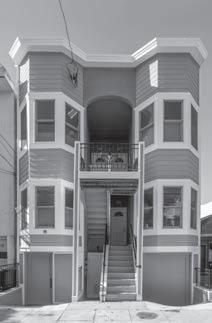

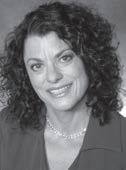
Last month, the San Francisco Planning Commission held a hearing to solicit public comments on a draft environmental impact report, published in December, for one of the City’s biggest development projects, underway at Pier 70. The EIR found that potential environmental impacts could be mitigated to “less than a significant level.”
“This is the intense part of the process, when environmental issues are being examined and resolved, including traffic issues that will be a challenge for Third Street,” said Art Agnos, former mayor and Connecticut Street resident. “It’s one of the most progressive developments in the history of this City, promising to enhance a virtually abandoned industrial area that can’t contribute to the community in its current condition. But there are challenges.”
According to Agnos, Forest City’s project is one of several contributing rapid growth in Southside San Francisco, including steady expansion of the University of California, San Francisco-Mission Bay campus, the San Francisco Giant’s Mission Rock project, and Orton Development’s Pier 70 historic core rehabilitation. Agnos emphasized that impact fees and tax revenues generated by these developments need to be effectively invested to address pressure on public transit and traffic congestion. He said that Mayor Ed Lee should provide more leadership in coordinating the large-scale devel-
opments, and create a state-of-the-art traffic management plan for Southside.
Last year, City’s Office of Economic and Workforce Development released the Southern Bayfront Strategy, a step towards the formation an overarching framework for housing, transportation and infrastructure in the area.
Forest City has been working on plans for its proposed development for more than a decade. The developer reached a milestone in 2014, when nearly 73 percent of San Francisco voters approved Proposition F, which allowed Pier 70 building height limits to be increased from 40 feet to 90 feet. Increased heights were tied to the project’s community benefits, most notably designating 30 percent of housing units as affordable for middle and low income residents, creating publicly accessible waterfront open space, and redeveloping existing structures for manufacturing and artisan uses. Despite the measure’s landslide passage, Dogpatch and Potrero Hill residents are opposed to the height increase.
Pier 70 spans 69 acres along the Central Waterfront. On a 28-acre site, Forest City proposes to construct multiple buildings consisting of 2,150 residential units, about one million square feet of commercial office space; and 445,000 square feet of retail, light industrial and artist’s studios. The exact number of residential units hasn’t yet been solidified; it could be reduced to allow for additional office space.
Final determination of the residential component’s size is largely dependent
on planning decisions made for the adjacent 21-acre former Potrero Power Plant due to zoning restrictions.
Forest City’s project is one of three located on the pier, including the Port of San Francisco’s Crane Cove Park and redevelopment of several historic office and industrial buildings by Orton Development. BAE Systems runs a ship repair facility at Pier 70.
“We love to work with communities on transformative large urban mixeduse projects,” said Jack Sylvan, vice president, Forest City. “Pier 70 offers an incomparable canvass of industrial history, the diverse culture of the Dogpatch neighborhood, and an expansive waterfront location, which makes this location extraordinarily unique. Pier 70 provides a fantastic opportunity to revitalize a fenced-off portion of the City’s waterfront in a way that provides tremendous community, civic and placemaking value.”
In addition to a variety of uses, plans call for rehabilitating historic structures and adding amenities, such as waterfront parks, a playground, market square and gathering spaces along 1,380 feet of shoreline. The project’s buildings would be setback 100 feet from the Bayfront and vary from 50 to 90 feet in height, with shorter structures situated closer to the water.
Streets throughout the development are designed to be friendly to pedestrians, bicycles and transit. A Pier 70 shuttle service would connect workers and residents with public transportation, bike-sharing locations and car-sharing services. Infrastructure to address expected sea level rise and earthquake risks would be installed.
“We’re paying for improvements that would protect buildings against the high-end of projected 2100 sealevel-rise estimates established by the state,” stated Sylvan. “We achieve this by raising the grade of the entire site to elevate buildings and ensure that
utilities function properly. With these improvements, Pier 70 can coexist with higher tides and storm surges. Many of these protections will be part of creative designs that maximize shoreline access for public use.”
The San Francisco Port Commission, Planning Commission and Board of Supervisors are reviewing the project, with decisions from each of these bodies anticipated by the end this year. If approved, construction will span about 11 years, with the first phase delivering park space, affordable housing, retail and historic building rehabilitation.
At the Planning Commission hearing, some community members supported the project; others had concerns about its neighborhood impacts. A prominent worry was that the influx of so many new residents and workers to the area will overload infrastructure, like Muni, roads, and parks. While the project offers an abundance of open space, recreational programming geared for residents of the new development hasn’t been created. If it’s inadequate, pressure could be placed on sports fields at nearby Jackson Park.
Although Forest City is developing the waterfront open space, the parkland will be owned by the City. Under California’s McAteer-Petric Act, enacted in 1965, San Francisco’s Bayfront must be preserved for public “water-oriented-uses,” which prohibits an array of structures, including tennis and basketball courts. Under current plans what remains of Irish Hill will be preserved, with an adjacent children’s playground installed, but specific sports and recreational programming haven’t yet been determined.
Planning Commissioners suggested that such programming be implemented early in the development process, and that further study be conducted to determine how public
PIER 70 continues on page 21

On January 31, the San Francisco Board of Supervisors unanimously approved a Ground Lease and Lease Deposition and Development Agreement that’ll allow the University of California, San Francisco to construct a new research and academic facility at Zuckerberg San Francisco General Hospital and Trauma Center.
Operated by the San Francisco Department of Public Health, ZSFG is a public hospital whose physicians are provided entirely by UCSF, with which it has partnered for nearly 150 years. More than 800 researchers and staff from UCSF’s four professional schools – Medicine, Dentistry, Nursing, and Pharmacy – who work at ZSFG occupy several buildings that don’t meet UC’s seismic standards. The new $200 million structure will concentrate these UCSF personnel in a modern facility within the ZSFG campus, supporting an extensive UCSF research program that, according to vice dean Sue Carlisle, “not only benefits the world, but directly benefits our community as well,” by advancing treatments for individuals with HIV/AIDS, heart disease, diabetes, and traumatic brain injury, among other conditions.
Plans for the new UCSF building at ZSFG have been in the works for at least five years. Last fall, the UC Board of Regents certified the project’s Final
Environmental Impact Report; approval from the San Francisco Health Commission followed in December. Before sending it to the full body, the Board of Supervisors Budget and Finance Committee reviewed the facility proposal, consenting to its terms despite reservations about parking issues posed by its construction, which’ll displace 130 patient spaces from an area known as the B/C Lot. Parking concerns dominated the conversation at the full board meeting as well.
To address the lost spaces, and an existing parking deficit at ZSFG, UCSF is developing a parking relief plan that hinges, in part, on expansion of the 23rd Street Parking Garage, where the Department of Public Health, in conjunction with the San Francisco Municipal Transit Authority, expects to add 307 spaces. The cost of this enlargement is estimated at $32 million, of which UCSF has pledged $10 million. No specific financing plan has emerged to close the gap. Greg Wagner, SFDPH’s chief financial officer, floated “the concept of a revenue bond, where you would essentially take the incremental revenues from the new spaces that are created through the construction of the garage” to repay SFMTA for the expansion. “We’re working with the MTA, but have not gotten to a financial model that works,” said Wagner.
In an exchange with Mark Primeau,
of SFDPH, District 7 Supervisor Norman Yee observed that once the vacated buildings at ZSFG are seismically upgraded – as financed by a general obligation bond, with an expected delivery date of 2020 – and reclaimed by the City or other entity, as Primeau put it, that “would make sense to be collocated on campus,” such as the Blood Centers of the Pacific, garage expansion might still be insufficient to accommodate workers and patients. Primeau, however, promised
an intensified transportation demand management (or “TDM”) program that’d mitigate the need for parking by “increasing shuttles” and bicycle lockers at ZSFG and promoting carpooling. John Updike, director of real estate for the City and County of San Francisco, mentioned “conversations with our colleagues at DPH and those who might have lots or availability that we know that could serve as excellent remote lots [for UCSF’s ZSFG staff], either within the City or immediately south of the City.”
District 4 Supervisor Katy Tang, while emphasizing that neither she
RESEARCH continues on page 18
Last year, the nonprofit urban planning organization SPUR, based South-of-Market, published a 72-page document, Mission Creek Sea Level Rise Adaptation Study. The report emerged from a collaboration among several public and private sector organizations in San Francisco – including the San Francisco Office of Community Investment & Infrastructure and Mission Creek Conservancy – and a Dutch team of flood-control and design specialists from Wageningen University
and the Amsterdam-based international consultancy firm, Arcadis.
The report identifies the area surrounding Mission Creek—a river now mostly culverted and infilled, except for a slim remaining channel that empties into the San Francisco Bay just below AT&T Park—as “one of the lowest lying parts” of “a city that is vulnerable to the impacts of sea level rise.”
According to estimations formed by the San Francisco Capital Planning
MISSION BAY continues on page 15




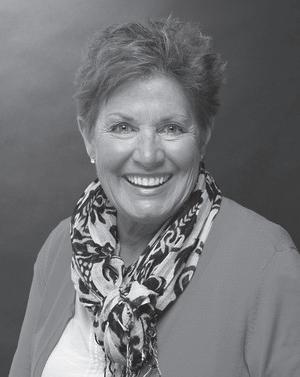
Third Rail, located at 20th and Third streets, isn’t the “fancy” bar people may think it is, according to owner and operator Jeff Lyon. “People sometimes apologize for ordering ‘just a beer’ rather than one of our house cocktails, but we feel that a bar is a choose-your-own-adventure kind of place,” he said. “Sure, we have nice stuff, but there’s nothing wrong with a shot and a beer.”
The railway-themed saloon opened on December 12, 2013, replete with a 4.5-foot vintage French train station clock in its entryway. Lyon began Third rail with Phil West, who is now his business partner and chef-owner of the Mission’s Range, which closed last year.
“Until I started working at Range – in 2006 – bartending was always just a way to support myself,” Lyon said. “I played in bands, worked in a recording studio, and even tried my hand at teaching high school English. But my experience at Range made me realize that I not only really love bartending, but that I also really liked the process
of figuring out how to make a place run effectively and efficiently. With some encouragement from friends who owned restaurants and bars in the City, I began putting together a business plan of sorts...Phil West caught wind of my plans, and one conversation lead to another, and we soon started looking for a location.”
The two decided to open in Dogpatch because they wanted to launch in an underserved neighborhood rather than a saturated one. “We also really liked that Dogpatch still feels a bit industrial and undeveloped,” Lyon said. “It’s a quirky area that continues to surprise me. I love the locals!”
They named it “Third Rail” after a cocktail Lyon devised, which became a regular fixture on the Range drink list, a mixture of bourbon, lillet, honey, lemon, and orange bitters.
“We wanted to have a subtle connection to Range,” he said. “It actually started as just a working title for our business plan, but when we found the Dogpatch location just off Third Street right by the light rail T-line, it just really seemed to fit. Also, I initially


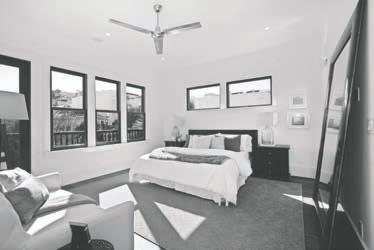


Claudia Siegel
ClaudiaSiegel.com CREATING

named the drink in the tradition of cocktail names that sound dangerous – like Corpse Reviver Number Two, Death in the Afternoon, Blood and Sand – and I feel that it fits to have a bar name sound a little dangerous. Our bar is pretty far from dangerous though!”
One of the things that makes Third Rail unique is its pairing of drinks with jerky; beef and mushroom. There’s the Jerk Jerky – beef with scotch bonnet, clove, allspice – and the Red Eye Jerky – beef with coffee, morita chili, arbol chili, and cumin. The mushroom jerky consists of shiitake mushrooms, soy sauce, sake, balsamic vinegar, garlic, and pepper.
“I have to credit my business partner, Phil, for pairing drinks with jerky,” Lyon said. “We knew we wanted something simple to snack on, but we didn’t want to build out a kitchen. The idea came to him at the Ferry Building farmer’s market one Saturday where he went every week to get certain seasonal produce for Range. He always stopped by Prather to get jerky to snack on while he shopped, and he realized that it would be a perfect pairing for drinks.”
Other drinks on offer include Jigglypuff – gin, sherry, orgeat, lemon, egg white, and nutmeg – as well as Evil Twin – mescal, grapefruit, lemon, aperol, habanero tincture, and celery bitters. The beverage menu changes throughout the year, often based on the availability of seasonal ingredients. The bar features a “drink of the week” that is altered every Monday. The jerky
menu rarely fluctuates, occasionally a new item is added.
Lyon believes the bar is special not only because of the jerky, but also its combination of well-crafted drinks in a simple space served by knowledgeable and friendly bartenders. In the future, he hopes to develop the basement into an event room. “It’s only a bare, notso-sexy space now, but we know it has potential,” Lyon said.
Third Rail seats 49 patrons and is open seven days a week, from 3 p.m. until midnight Sunday through Wednesday, and until 2 a.m. Thursday through Saturday.
service manager Andy Jackson, in response to one season passholder pointing out that mistreating a company’s best clients by giving them nothing for a ruined day of skiing – at the cost of hundreds of dollars of travel expenses – was insulting. When the brew was declined, Jackson stormed off, declaring “he’d done his best.” Trudging out of the resort, the customer tried to hail an Alpine bus to take his party to the White Wolf parking lot, where an attendant had assured him he’d get “door-to-door” service. No deal, said the driver, I’m not driving there; there’s no place to turn around. Ah, winter. It’s certainly chilly out there. Send your customer service stories, good or bad, to editor@potreroview.net.



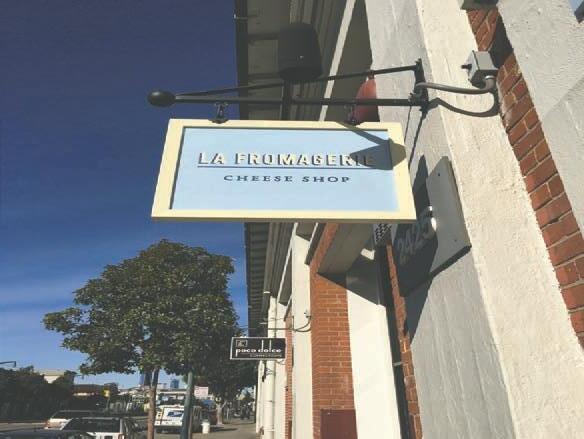 BY BRETT YATES
BY BRETT YATES
If you live in Dogpatch you probably already know, but it bears repeating: Neighbor Bakehouse, located at 2434 Third Street, is the best bakery, certainly in San Francisco, possibly in the United States. Really, if you’re interested in having a good life there’s no reason not to start every day there . . . except Monday and Tuesday, when it’s closed.
In spite of its illustrious breads and a strong daily selection of crispy, buttery pastries on both ends of the sweet-savory spectrum, it hasn’t yet attracted Tartine’s tourist crowd. Reasonable lines move smoothly and
without distraction through an interior that feels like a functional bakery, not a curated patisserie-restaurant. I can’t tell you what to order; anything or everything is excellent, from the pistachio blackberry croissants to the ham and cheese morning buns.
Now that you’ve had breakfast, a quick question: have you used the public fishing pier at Agua Vista Park , 801 Terry A. Francois Boulevard, for its actual intended purpose of fishing? I sometimes pass by and notice couples and families admiring
Chez Maman on Potrero Hill.
If you’re following my footsteps, the final two stops are a little more challenging, located as they are on the western edge of this newspaper’s traditional coverage area, in the neighborhood the View has attempted to brand “Mishpot”: a term designating the zone between Highway 101 and Bryant Street, where the left side of Potrero Hill begins to blend into the Mission. Will this real-estate neologism ever catch on, as “Tendernob” definitely, and perhaps regrettably, has, or are we like Gretchen Wieners in Mean Girls, trying to make “fetch” happen when Regina George has already decided that
Fagan chose a storefront on leafy 24th Street, the Mission’s most attractive commercial corridor.
Although it replaced the casually upscale Sous Beurre Kitchen, which closed last spring, rather than a taqueria or neighborhood grocer, Almanac Taproom may nevertheless represent a yuppie intrusion to some, as it fronts the Calle 24 Latino Cultural District, whose historic character and vibrancy one hopes will survive changes in the larger neighborhood. Now it’s possible, just a block or two from La Torta Gorda, to pay $13 for 11.2 ounces of draft beer.
T he beer—produced in collabora-
the Bay view, but whether there are actual fish to be caught along the Central Waterfront is a mystery to me. Inspired by a San Francisco Chronicle article indicating that this winter, thanks to heavy rains, “has the chance to rival the best in history” for sturgeon fishing in the Bay, I picked up a rod and gave it the old college try. Not with any real hope of snagging one of the supposedly abundant ninefoot sea monsters mentioned in the Chronicle, but maybe I’d get a jacksmelt or something.
I know virtually nothing about fishing. My disappointment at the Agua Vista pier shouldn’t be regarded as a trustworthy sign that fish can’t be found in the area. Indeed, I witnessed firsthand the easy success of a nearby waterfowl that, by dipping its beak beneath the surface, snatched prey that might otherwise have gravitated toward my inexpertly cast lure. Even so, it was a pleasant way to pass an uneventful sunny day. A few curious walkers strayed from the Bay Trail to chat with me as they admired my obviously futile efforts. I’ll bet you can do better. Fortunately, you don’t need a license to fish from California’s public fishing piers. Don’t wait too long, though: with the new Warriors stadium about to go up a few steps away, Agua Vista Park’s future shape isn’t clear. There have been rumors of a potential new ferry terminal, activity which might scare the sturgeon away.
Because I failed to catch my own lunch, I visited La Fromagerie, 2425 Third Street, a cheese store that sells takeaway sandwiches until the lateafternoon. Unlike Neighbor Bakehouse, La Fromagerie doesn’t offer much in the way of outdoor seating, but the sandwiches – which come with chips or salad on the side – are great. The charmingly rustic shop offers wine and an impressive selection of about 50 gourmet cheeses, as well as French accents to rival the ones at
it never, ever will?
Feel free to let us know. In any case, the first of two Mishpot destinations is the skate park at Potrero Del Sol , on Potrero Avenue, below 25th Street, an expansive green space that boasts a community garden, outdoor performance space, and children’s playground. Despite its convenient back entrance on San Bruno Avenue, Potrero Del Sol seems to belong far more to the Mission than it does to Potrero, owing in large part to the longstanding closure of the 25th Street overpass, the Hill’s miniature version of President Trump’s border wall.
With an experts-only bowl and a vast plaza of ramps and rails, the skate park is the City’s largest. Even if you don’t skate, it’s worth stopping by to watch San Francisco’s most courageous and acrobatic teenagers do their thing. The bench just beside the graffiti-decorated concrete expanse is prime real estate for spectators.
tion with small Northern California farms that grow the plums, blackberries, grapes, and apricots added during fermentation—is incredible. You can order a burger, banh mi, or sausage sandwich to go with it. From the refrigerator in back pick up a to-go bottle of Almanac’s Dogpatch Sour, a “lightly tart ale” that’s “brewed with California Rainier cherries, using a house blend of wild yeasts, bacteria, and SF sourdough yeast.” When you stumble back out onto 24th Street after a few hours, befuddled and bankrupt, Potrero Hill will look like a mountain, and getting home—if you live on the other side—will seem impossible: the truest sign of a great day.
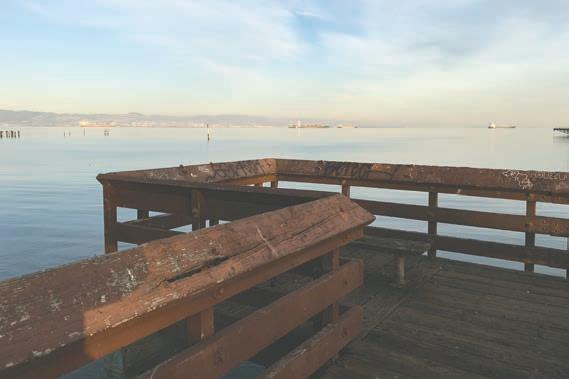

Finally, support a Dogpatch business without leaving Mishpot: the new Almanac Taproom at 2704 24th Street, just past Potrero Avenue. Almanac Beer Co., the City’s foremost purveyor of barrel-aged ales, doesn’t have its own brewing facility, generating most of its product on borrowed equipment in San Jose, but it maintains its company office at the American Industrial Center on Third Street. I assumed that, when the inevitable taproom emerged to showcase Almanac’s unique line of small-batch beers, it, too, would be located in Dogpatch. Instead, cofounders Jesse Friedman and Damian
This monthly feature provides a series of 12-hour proposals—configurations of potential perfection within the paces of daily life —for residents and visitors to the land once known as Rancho Potrero Nuevo, more or less between the waterfront and the Mission. Send your nominations for possible inclusion to editor@ potreroview.net.
 BY KYLE BORLAND
BY KYLE BORLAND
Nestled at the corner of Vermont, San Bruno and 20th streets, the sundrenched 100-year old McKinley Square Park, named after President William McKinley shortly after his death, is the focus of care by a dedicated cadre of volunteers. Every year, Friends of McKinley Square Park – a neighborhood advocacy group – organizes Corporate Days of Service, consisting of eight to 40 volunteers, to help maintain the open space.
“We have 10 to 15 companies a year that reach out to us to participate in the days of service,” said Joyce Book, executive project director, Friends
of McKinley Square Park. “2016 was unique because the company wanted to work all day; it was exciting.”
Last fall, the organization partnered with San Francisco-based E.ON Solar Company to organize a full day of volunteer restoration projects. The E.ON Solar Company team arrived by private shuttle – atypical of urban parks, it’s safe and accessible to load and unload large parties near McKinley Square – and was briefed by the park’s City-assigned gardener on the day’s projects.
“We focused on removing foxtails, clearing natural pathways, pulling weeds and restoring foliage to the eroded western hillside,” said Book.
“We were able to do so much because they dedicated an entire work day to our park.”
Book has received offers of help from individuals, and is determining the most effective way to organize the influx of interest. “Luckily, the volunteers have been very open to being placed into a group of eight random volunteers,” said Book. “We like groups to have at least eight people to respect the gardener’s time and efforts.”
Book is hopeful that renewed
interest in McKinley Square will lead to another round of updates in the future, similar to the investment the park saw in 2009, when Friends of McKinley Square Park started to generate neighborhood attention.
“It’s a transitional park,” said Book. “In the last year you really started to see the changing demographics of the neighborhood from the new families and new faces at the park every day; it’s beautiful.”
Bryr Studio, located in the American Industrial Center, is a combination shoe shop and studio that handmakes and sells custom women’s clogs. Shoes are created to order by founder Isobel Schofield and her small team of designers. Schofield launched the shop two years ago, and opened the studio a year later.
Shoes are designed and manufactured in the back of the studio; in the front, customers can peruse 25 different styles and try them on before making a purchase. According to Schofield, Bryr Studio offers 15 different leather colors and two heel heights, providing customers with approximately 2,000 distinct shoe options, with prices that range from $240 to $270. The leather is sourced from American tanneries.
Most of the studio’s customers
don’t live in Dogpatch, but come from elsewhere in San Francisco. “We have a lot of people coming down to come to the shop specifically,” Schofield said. Some people are drawn into Bryr Studio when it catches their attention as they walk by, she said, but most clients knew about the studio before visiting and are “destination shoppers.”
Schofield said she loves the neighborhood, and used to live down the road from her studio, when Dogpatch was “very quiet and very empty…Two years ago, when we moved in here, [the American Industrial Center] started converting the ground floor spaces on the Third Street side [from manufacturing] to retail, and I think that’s really affected the neighborhood, kind of opened it up and made it a little more friendly.”



Prompted by the mugging of an elderly man and regular littering of hypodermic needles, Potrero Hillians living along the median on Carolina Street, between 22nd and 23rd streets, began meeting last summer to discuss turning the long-overgrown strip into a municipal park. Last month, more than two dozen volunteers and a matching number of San Francisco Public Works personnel began clearing heavy brush in the area.
“We didn’t know what we were working with until we started this clearing process,” said Kate Sheets, climbing down from a muddy embankment after clipping wet branches in misty conditions. She admitted to feeling a bit overwhelmed, noting that the 1,000-foot long, 20-foot wide median is going to take several efforts to fully cleanup.
Last fall, advocates were able to designate the median as an official park under the Street Parks Program, a partnership between Public Works’ Bureau of Urban Forestry and the nonprofit San Francisco Parks Alliance. To keep the designation, the neighborhood group pledges to maintain the open space they’ve dubbed “Carolina Island Park” for at least three years. In exchange, the City will provide resources, such as the staff, tools and a Recology truck that were on hand for the February cleanup.
“Being official gives us access to more resources,” said Kathryn Blum,
who said the group was spurred by the success of a similar effort at Tunnel Top Park. Blum, who hosted the group’s first meeting, has lived along the median for 21 years. “It’s a fine swatch of greenery and special, so we wanted to make it our beautiful corner of the world,” she said.
According to Julia Brashares, program manager for Public Works, the median has been an illegal dumping
clandestine users had been roughing it, though. “Whoever was here was enjoying some fine wine,” said one volunteer, pulling two empty bottles he deemed top shelf from the dirt.
A clearing at the top of the median near 22nd Street revealed six nowuneven cement slabs where a sitting area had been sited decades ago. The finding prompted a memory from a 63-year old volunteer, Katrina, who grew up on the block and still lives nearby. She’d signing her initials in the cement when it’d been poured. “This actually was a nice area, but the City didn’t really maintain it,” she declared wistfully.

ground for some time, and has hosted homeless campers. “No major appliance, no toilets,” Brashares said halfjoking of common items found during similar cleanups. But heavy brush did hide two bicycles and a large plastic bin with leftover belongings, as well as several additional containers. Not all
Joining her in clearing that patch was Nancy Pagan, who has lived a block away most of her 90 years, and still owns a three-unit building her late husband built. “Today is a big day for us, “she said, in between carrying large bundles of twigs and picking rocks from the dirt. Pagan’s daughter, Kathy Pagan Quadros, is one of the effort’s main organizers.
The group is considering rebuilding the sitting area along a bit more than 100 feet of flatland before Carolina Street begins its sharp down slope. And it hopes to raise money for landscaping. “We want to come up with a plan to make it sustainable so it will take less work to upkeep,” said Sheets. “The idea is to have sustainable trees and plants that aren’t going to get too bushy.”
The lone streetlight on the block fails to illuminate either of the two staircases that allow for street crossings. “They are dark at night and scary, so we need more lighting for safety,” said Kathryn Blum, who has lived on the block for 21 years.
According to Marissa Alexander, Parks Alliance program manager, park improvements costs will have to be paid for by citizens, rather than the City. Assisting with fundraising is her organization’s main role. “There’s been a few attempts over the years to get this cleaned up and hopefully this time it works,” she said. Parks Alliance is involved with 130 similar San Francisco projects. Before being hired by the City five months ago, Brashares worked at Parks Alliance in Alexander’s position, which Brashares said has proved an asset in communications between the nonprofit and the City.
The Good Life Grocery, Chiotras Grocery and Goat Hill Pizza contributed food and snacks for the volunteers, who felt satisfied with their first day’s effort. They expect to hold another one soon.
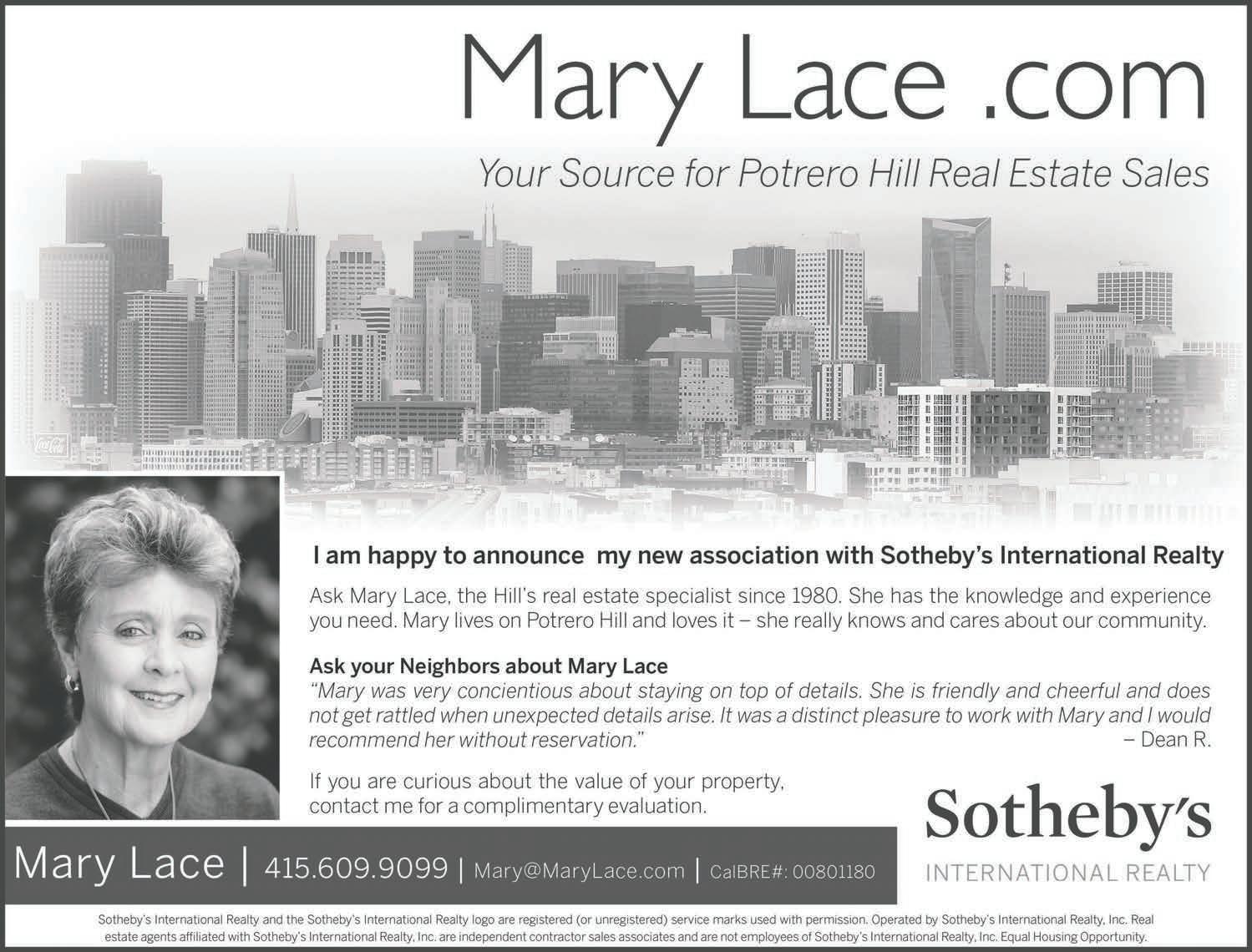
In December, then State Senator Mark Leno, who represented California’s 11th district, termed out of office. Leno, a Democrat, served 14 years in Sacramento, including two terms in the State Legislature’s upper house and three in the lower. Between 1998 and 2002, he occupied the District 8 seat on the San Francisco Board of Supervisors.
A Noe Valley resident, Leno considered declaring his candidacy against incumbent Ed Lee in the City’s 2015 mayor’s race, but decided against it. When his senate tenure ended last year, mayoral speculation arose once more for Leno. In January, the San Francisco Chronicle reported that Leno had engaged public relations firm SCN Strategies, which coordinated both of Ed Lee’s campaigns, signaling Leno’s intentions for 2019, when term limits will prohibit Lee from running.
In a January View interview, Leno acknowledged that he was “giving a serious look at the 2019 mayor’s race,” but stated that there was “no breaking news to be shared at this time.” Last month, however, he publicly announced his candidacy.
A hero of San Francisco’s LGBT community, Leno, a Wisconsinite who dropped out of rabbinical school as a young man, moved to California from New York in 1977 at the urging of his sister, a Stanford University student. Living in the Tenderloin, he started Budget Signs Inc., a small business that he still owns today. Inspired by Harvey
Milk, he became a civil rights activist and volunteer for nonprofits such as Mobilization Against AIDS, the Human Rights Campaign, and the American Jewish Congress. He chaired the capital campaign for the San Francisco LGBT Community Center, and discovered that he “had a facility for fundraising, which is a dangerous thing, because then everyone wants you on their board of directors.”
In 1998, Willie Brown appointed him to the San Francisco Board of Supervisors, where he took over the seat vacated by Susan Leal, who had become San Francisco Treasurer. At age 46, Leno had never held elected office; the Chronicle described him at the time as “a behind-the-scenes player,” known for “championing and raising money for other candidates and causes, from AIDS services and the new gay community center to the Holocaust Museum and the Democratic Party,” and as a “protégé of State Assemblywoman Carole Migden,” whom, in 2008, he’d defeat in an acrimonious State Senate race.
His appointment to the Board of Supervisors was controversial. Mayor Brown had pledged to name an individual of the same gender, sexual orientation, and race as Leal, a Latina lesbian, to preserve the board’s diversity. But supervisors, in those days, were paid only $24,000 per year – compared to about $111,000 today – and the mayor struggled to find a suitable replacement who wanted the job. Leno checked only one of the three boxes on Brown’s list, but his record in community service
convinced Leal to support him. According to Leno, he’d “had no plans ever to run for office” before assuming his Board of Supervisors position. “I came in completely inexperienced; I had no background in any sort of public policy.” But he quickly found that he was a “closet policy wonk and that I loved the job.”
The experience resigned him to a career in politics. “What pushed me over the edge,” he said, “was that I didn’t want to wake up ten years [later] and wonder what it would have been like.”
In 2002, he earned a State Assembly seat, where three years later he authored Assembly Bill 849, a law that, after passing the Assembly and the Senate, would’ve made California the first state to legalize gay marriage by legislative means if not for Governor Arnold Schwarzenegger’s veto.
With the 2008 election, Leno became the first openly gay man in the California State Legislature’s upper house. As state senator, he helped initiate an unsuccessful effort to create single-payer healthcare in California.
By 2016, he’d authored 161 laws, including legislation to establish Harvey Milk Day, prevent transgender discrimination, promote pedestrian and bicyclist safety, and reduce greenhouse emissions. His diligence and civility earned friendship and respect from members of both major political parties. In Leno’s final legislative session at the Statehouse Democrat Kevin de León and Republican Joel Anderson together paid tribute to the “true statesman” for
his “elegance” and “eloquence.”
According to Tony Kelly, Potrero Hill Democratic Club president, “Leno has been a reliable advocate for important issues affecting our neighborhood, including tenant protections, raising the state minimum wage, probation services for felons, and single-payer healthcare. The Hill’s voters have regularly supported his campaigns, and a number of neighborhood activists urged him to run for mayor in 2015. ”
In 2016, Leno endorsed State Senate candidate Scott Wiener, who defeated fellow Democrat Jane Kim to succeed Leno in the 11th District. “Mark Leno’s legacy in the State Legislature is hard to overstate,” Wiener said. “On so many critically important issues – civil rights, criminal justice reform, housing, consumer protection, clean energy, economic justice, and many others – Mark has been a progressive champion for our state. I’m so honored to succeed him and will work hard to continue his legacy.”
Leno described his work in the Statehouse as “a 24/7-type of job. I was in Sacramento Monday through Thursday and in the district Friday, Saturday, Sunday.” Whatever sabbatical he may recently have enjoyed – he described himself in January as being “still in transition” – looks now to be over. “The results of the November [national] election have certainly reminded me that there is a lot of work to be done,” he remarked.


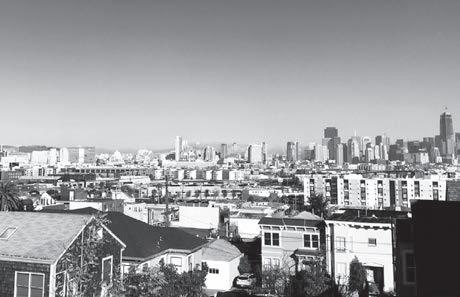

 BY KYLE BORLAND
BY KYLE BORLAND
With a knack for conversation and a voice for radio, Paul “The Lobster” Wells is among a fading class of disc jockeys. Wells has more than 40 years of radio and broadcast experience at California stations, broadcasting rock classics and his trademark wit. But it’s in San Francisco’s Media Gulch – a cluster of multimedia companies located in an area bounded by the Embarcadero, Washington and Union streets – where he’s built his career and reputation.
“There’s a photo in my office of Media Gulch, taken from the Embarcadero, where you can see the offices of nine jobs I’ve held,” said Wells. “I’ve
worked everywhere in the Gulch.”
Wells’ production company, Flow Communications, is best known for producing “The Will and Willie Show,” featuring former San Francisco mayor Willie Brown and local comedian Will Durst, which is recorded in front of a live audience once a month and distributed by Wells’ company on willandwillie.com. “The show was originally named ‘SF Point of View’ to broadcast our perspective to those who feel the pull to come here,” Wells said. “San Francisco is a cultural petri dish, everyone comes here; like filings to a magnet!”
Wells channels that cultural melting pot into his radio show, “Lobster’s Sunday Brunch,” which airs Sundays 10 a.m. to 3 p.m. on FM 97.7, “The River.” With a focus on Bay Area artists at the top of the program, he deploys his years’ worth of musical knowledge, playing a range of artists from across the decades. He sees San Francisco as a pivotal component in music’s development. “Enrico Caruso, the Sex Pistols, The Beatles...all had their last concerts here,” Wells said. “Add that to the Fillmore’s jazz, the Haight’s Hippies, even Brannan’s Mormons and you have something special.”
Wells is a San Francisco Beautiful board member; the organization helped save the City’s famous streetcars. He serves as District 10’s representative to the City and County of San Francisco’s Bicycle Advisory Committee (BAC). BAC meets monthly at City Hall to draft recommendations to the Board
of Supervisors concerning bike policy.
“We’re currently working on cleaning up ‘The Hairball,’ and are developing something similar to ‘The Wiggle’ from Potrero Hill to the 22nd Street CalTrain station,” he said. “We want to ensure safety for our bikers and alleviate congestion and, in regards to the Wiggle, we want to give bikers the flattest route up the hill as possible.”
When Wells first moved to the Hill’s southwest slope decades ago, commercial services consisted mostly of a laundromat, Blooms and Goat Hill Pizza. “You have to have anchors in a community,” he said. “The Potrero Hill secret is out – we’re the first to get sun and the last to get fog – and with that change we need to keep supporting the businesses that have become institutions of our community.”
Wells is glad the Hill hasn’t seen the same litter from increases in bar traffic as other City neighborhoods, such as the Mission. He attributes the problem to a lack of civility and laziness in society that has even seeped its
way into the way DJs do their jobs.
In the Jedi DJs Facebook group, a group of veteran and retired radio DJs, Wells finds solace from others who understand the fading art of playing songs based on accessing deep emotions. Wells is one of the last Jedi DJs still on the air. “Playlists should be about what comes from [the heart],” said Wells, pointing to his chest. “Not a computer-curated hit track on repeat.”
VOLUME 78 MARCH 2017
Come one, come all & pick up a paint brush at the next Rebuild Potrero community event – Unite Potrero: Community Mural, March 11, 2017, 10am – 4pm, Missouri St. / Turner Terrace.

This event is part of a larger initiative that BRIDGE Housing has been working on in partnership with Potrero residents, SF Planning Department, SF County Transportation Authority, Fletcher Studio, SF Metropolitan Transportation Authority (MTA), SF Housing Authority, & 1Brush Initiative. The project consists of temporary roadway & public space improvements to enhance pedestrian safety & provide new community gathering areas. This work is being implemented to respond to community desires for immediate pedestrian safety improvements during the Rebuild Potrero construction.
At the February 9, 2017 Community Building Group meeting, the SF Planning Department solicited the last round of input on the mural, which was designed by Potrero Terrace & Annex youth, & they presented the final renderings of the pedestrian safety improvements & traffic-calming measures. Implementation begins on March 11, with the mural installation & will take place in phases through the Spring. The later phases include intersection safety enhancements at 23rd/Arkansas, 23rd/ Dakota/Missouri, 25th/Dakota/Texas, & Watchman/Missouri. Multi-use areas, which will provide new community gathering spaces, will also be carved out at 23rd Arkansas, 25th/Dakota/Texas, & Watchman/Missouri.

See you on Saturday, March 11! Drop by at any time during the day for any amount of time you can spare. We can’t wait to see you & create something beautiful together.



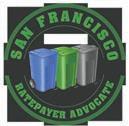
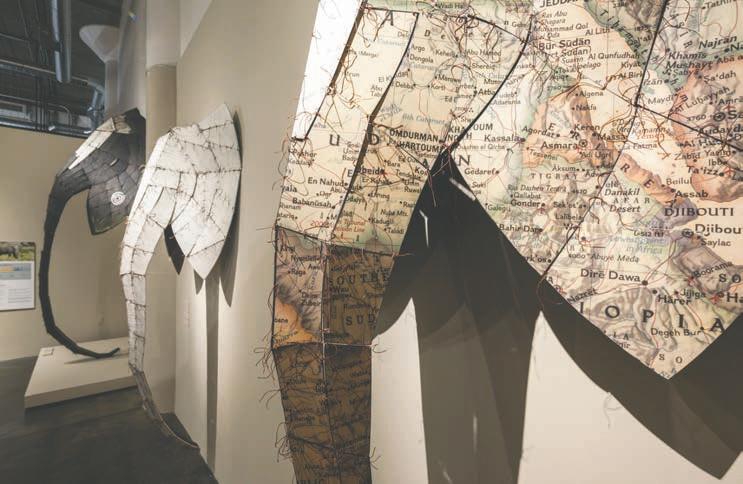
Food: Off the Grid
With roughly 30 food trucks/ vendors, a full bar and live music, Off the Grid is California’s largest weekly street food market. Fridays, 5 to 10 p.m., Fort Mason Center. For schedule and more information: http://bit.ly/2kOIWAj
Family: Yoga
You’re your baby’s best teacher. Adult yoga is matched with developmentally appropriate movement, song and play for young movers, crawling to two years, accompanied by a parent or caregiver. Space limited; advanced signups required. 10 to 10:30 a.m. $25/family; Anytime Members: $18.75, 25 percent off; Limited Members: $21.25, 15 percent off; Mini Members: $22.50, 10 percent off. Recess, 470 Carolina Street. More information: http://bit.ly/2d3Bcpf
Sports: 1880s Vintage Base
Ball Opening Day
Bay Area Vintage Base Ball is the region’s first and longest running vintage baseball league, played by 1886 rules, including small gloves, large wooden bats, old style uniforms, umpires in fancy hats – who must be addressed as, “sir” – with the goal of historical accuracy. There’s no high fives, which are banned because they weren’t invented until the l20th century. Free. Noon. Big Recreation Field, Golden Gate Park, Lincoln Way and Seventh Avenue. More information: http://bit.ly/2me7FLn. Schedule: http://bavbb.com/schedule
History: James R. Browning U.S. Courthouse
Docent-led tours available on Tuesdays of the James R. Browning U.S. Courthouse, a National Historic Landmark, headquarters for the United States Court of Appeals for the Ninth Circuit, which hears appeals from lower court decisions in the nine Western states. Tours begin at 1 p.m., last approximately 60 minutes, and include visiting the old post office lobby on the first floor, as well as available courtrooms. No reservations are required. Enter the building and meet the tour guide in the lobby. Each adult needs to pass through security screening and bring a photo identification. Free. 95 Seventh Street. More information: http://bit.ly/2mdPlSR
Music: Daniel Berkman
Potrero Hill resident Daniel Berkman is a composer, multi-instrumentalist and innovator of the kora, a 21-stringed harp/lute from West Africa. 7:30 to 9 p.m. Farley’s, 1315 18th Street.
Art: Global Myopia Hosfelt Gallery is pleased to present the West Coast premiere of Marco Maggi’s first video installation, Global Myopia The two-channel, 30-minute video installation draws its content from Maggi’s 2015 Venice Biennale exhibition in the Uruguay pavilion. Maggi’s video venerates and satirizes the complexities and paradoxes of the experience of contemporary art from the viewpoint of a spectator observing spectators. Free.
Reception: March 11, 4 to 6 p.m.
Exhibition March 11 to April 29. Hosfelt Gallery, 260 Utah Street. More information: http://bit.ly/2m9HuZB or 415-495-5454
Parade: St. Patrick’s Day Parade & Festival
The West Coast’s largest event celebrating Irish history and culture, the 166th Annual San Francisco St. Patrick’s Day Parade and Festival attracts some 100,000 revelers every year, one of the City’s most popular events. Free. Festival: 10 a.m. to 5 p.m. Civic Plaza Center. Parade: starts at 11:30 a.m. at Second and Market streets. More information: http://bit. ly/1WkQOSO
Music: David de Alba’s Live
Tribute to Judy Garland Finocchio Club’s legendary actor, singer-impressionist David de Alba will breathe life, drama, and humor in his tribute to Judy Garland. de Alba will sing songs associated with Ms. Garland, narrate funny anecdotes that Judy herself told during her many 1960’s television appearances, along with some personal stories about meeting her.
Tickets: $20. 3:30 p.m. MVIG Cultural Arts Center, 3528 South Maryland Parkway, Las Vegas. More information: text Ixela Gutierrez, 702.339.0948; David de Alba, cubanlegend@cox.net
Science: Pi Day Puzzle Party and Competition
Ask a Scientist is a casual, educational, entertaining lecture series that takes place at cafes and other informal venues around San Francisco. Trying to decide how you’re going to celebrate Pi Day, 3.14, this year? Avoid the congested airports and typical math holiday madness, and come to Ask a Scientist’s Pi Day Puzzle Party; a boisterous math and logic puzzle competition, hosted by Juliana Gallin and Wes Carroll. Free. 7 p.m. SoMa StrEat Food Park, 428 11th Street. More information: http://bit. ly/2meslDb
Community: Dogpatch & Northwest Potrero Hill Green Benefit District General Board Meeting. Working together to green, clean, and beautify public spaces in Dogpatch and Northwest Potrero Hill. Board of Directors meeting. Free. 6:30 to 8 p.m. Tivoli Room, University of California San Francisco-Mission Bay, 654 Minnesota Street. http://www.dnwph-gbd.org”
Anniversary: St. Patrick’s Day Farley’s 28th Anniversary Celebration and St. Patrick’s Day! Bagpipes and live Irish music 9 a.m. to noon. Irish stew and soda bread until it sells out! Farley’s, 1315 18th Street.
Family: Felt & Sock Puppets
Turn your living room into a theater with handmade sock and felt puppets! Transform socks and scraps, felt, feathers, buttons and baubles into a one-of-a kind character that YOU bring to life! All materials provided, but extra single socks always welcome. Ages four and up. 3 to 4:30 p.m. Free. Mission Bay Branch Library, 960 Fourth Street. Space is limited; reserve yours here: http://bit. ly/2lngswS
Food: Off the Grid Yummy offerings available for purchase from San Francisco’s favorite eateries and food trucks, a lively atmosphere and picnics on the lawn with a view of the Bay and Golden Gate Bridge. Sundays, 11 a.m. to 4 p.m. Main Parade Ground Lawn, The Presidio. Free. For schedule and more information: http://bit. ly/2kOIWAj
Music: Soul Delights
Live music by Soul Delights. 7:30 to 9 p.m. Farley’s, 1315 18th Street.
Food: Cookie Contest
Make your favorite cookies — lots of them — and bring them to Omnivore to compete in the contest for best cookie of 2017! Free to entrants. If you want to eat cookies and not bake them, pay $5 to be a contest judge. The winner splits the door money; runner-up prizes as well. 3 to 4 p.m. Omnivores Books, 3885a Cesar Chavez Street. More information: http://www. omnivorebooks.com/events.html
3/25 – 3/26
Market: Treasure Island Flea
Each month, this modern urban market houses roughly 400 curated vendors selling originally-made and designed items, art, and antiques. With more than 25 food trucks, live music, workshops, kids games, and bars with seasonal cocktails, local wines and brews. $3 admission. Free parking. 10 a.m. to 4 p.m. More information: http://www. treasureislandflea.com
Music: John Lewis, Gary Schoofs, Tim Hazen
Live Music by John Lewis, Gary Schoofs, and Tim Hazen, who do covers of Beatles, Eagles, Everly Brothers, Simon & Garfunkel, Joni Mitchell, and Crosby, Stills, Nash and Young. 7:30 to 9 p.m. Farley’s, 1315 18th Street.

Potrero Dogpatch Merchant’s Association meets the second Tuesday of each month at 10 a.m. at Goat Hill Pizza, corner of Connecticut and 18th streets. Website: www.potrerodogpatch.com . Call 415.341.8949. Next meeting: March 14th.
Starr King Open Space meets for monthly Stewardship Day the second Saturday of each month from 9:30 a.m. to 12:30 p.m. at Starr King Open Space, corner of Carolina St. and 23rd St. Come out and meet your neighbors, be a community steward, enjoy the natural grassland habitat, see spectacular views, and celebrate our beautiful neighborhood open space. Everyone is welcome. Find out more at www.starrkingopenspace.org or facebook.com/StarrKingOpenSpace
SOMA Rotary Club meets the second and fourth Thursday of the month at Mission Rock Resort, 817 Terry Francois Blvd. We meet at 6 p.m. for a mixer and 7 p.m. for a dinner meeting. We provide community service to the Mission Bay, Potrero, and Bayview communities. The focus is on providing services for the under-served of our community. The website is located at: www.meetup.com/Mission-Bay-Rotary-Club. For more information contact Nine at: n.ladow@comcast.net
Potrero Hill Garden Club usually meets the last Sunday of the month at 11 a.m. for a potluck in a local home or garden. We occasionally visit gardens such as Ruth Bancroft, Yerba Buena, Cornerstone, Filoli, and the rooftop garden at the Fairmont. We discuss gardening appropriate for Potrero Hill’s microclimates, and often have speakers on subjects such as drought, wind, shade, pests, and even flower arranging. For details, please contact us at Gardener@PotreroHillGardenClub.org
Green Benefit District Thank you to everyone who has signed up to run for our Board of Directors election happening this March. Please look for the winners to be announced in April.
 BY CHUCK THURSTON
BY CHUCK THURSTON
The University of California, San Francisco-Mission Bay Memory and Aging Center is an apt setting to exhibit paintings by Potrero Hill artist Sofia Carmi, who produced the works while healing from the recent loss of her longtime husband, artist Brent Bushnell.
Abstract art often attempts to connect the inner world of feelings and memories with the outer world of expressive colors, shapes, and textures, a process that Carmi finds stimulating. She referred to the creative metamorphosis of raw pigments into
a meaningful painting as an “alchemical” process of transformation. Her paintings are a way of sharing this experience with others, with the hope that viewers will engage in their own metaphysical “dialog” with the work.
Carmi developed her work thematically. “Rhapsody” is about the flow of life; “Boneland” refers to structure and its relation to space. Both themes are tied together in the experience of life in a physical body.
Carmi has been painting since she was 16. Her work is colored by her experiences growing up and traveling to many countries before settling in San Francisco in 1985. She describes herself as a “modernist,” and has been strongly influenced by existential philosophy. The feeling of existence in the modern world, combined with questions about the nature of life and the universe, provide the essential context for her work. Her goal is to put feeling and spirit into her art so that its essence can be felt by others.
Sofia Carmi’s work can be seen at the UCSF Memory and Aging Center, 675 Nelson Rising Lane, Gallery 190, Monday to Friday, 9 a.m. to 5 p.m. She will hold a lecture March 15 from noon to 1 p.m. at Room 338, Sandler Building, UCSF.



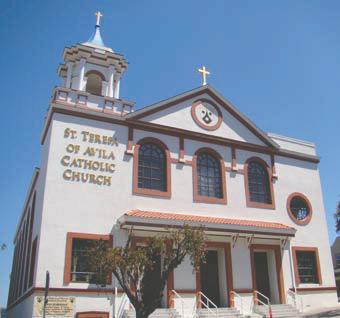




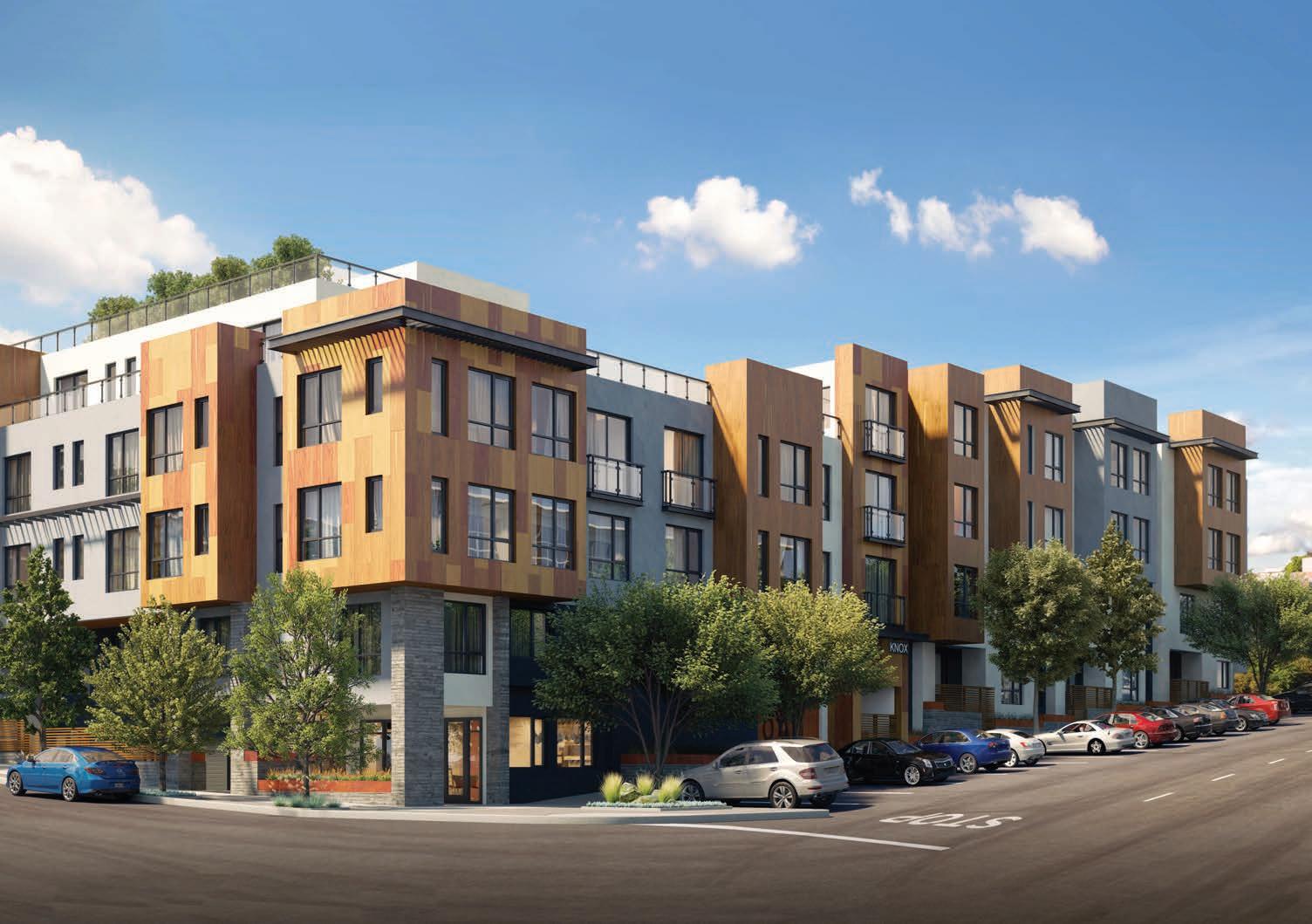
BUDGET from front page
increases for pensioners. The average municipal employee now makes $108,774 in salary and $49,864 in benefits.
San Francisco’s population swelled from 805,000 to 877,000 in the same timeframe, creating new demands on infrastructure and services. In a statement to the View, the Mayor’s Office reported that between October, 2014, and October, 2015, street cleaning requests increased 30 percent, tonnage removed from streets jumped 36 percent, and steamer requests rose 20 percent. That led to 10 percent staffing growth at the Department of Public Works last year.
The City faces unique demands. Being California’s only combined city and county, it has to pay for the Sheriff’s Department, jails and health services. The budget includes a seaport, an international airport and the Hetch Hetchy water system.
According to Lee spokesperson Ellen Canale, staff increases have been necessary to maintain and improve the quality of life that San Franciscans expect. “These investments have been made to keep our City safe, clean, and healthy as it continues to attract new residents and businesses,” she said.
During his time in office, Lee has added 450 positions to San Francisco International Airport, which has seen the number of passengers rise each year, from between 3.2 percent and 8 percent. He created 1,100 new positions for the Department of Public Health, 1,000 for San Francisco Municipal Transportation Agency and 300 for
the San Francisco Police Department. While there are 500 additional administrative and finance spots, according to the Mayor’s Office, 86 percent of the new jobs have been in service areas.
In the 2016-17 budget, not a single department experienced cuts or lost personnel.
The San Francisco Unified School District, which operates outside the control of the Mayor’s Office, now employs more than 9,000 people, up from 5,500 ten years ago.
Budget growth may not be sustainable. With a sales tax measure failing at the ballot box last November, fiscal projections have slipped into the red, showing a deficit of $348 million over the next two years, and $848 million by 2022. That’s not accounting for any damage the Trump Administration might wreak on the City. The 2017-18 budget reflects an additional 277 employees, but Lee has asked municipal department heads to avoid adding new positions going forward.
In the meantime, a natural question is, have staff increases maintained or improved the City’s quality of life?
Municipal parks are meeting maintenance standards, last year rating 86 percent for upkeep, one percent above the goal adopted 11 years ago by Recreation and Parks Department and the Controller’s Office. Parks in Districts 10 and 11 were the only ones falling below that, at 81 percent. The District 10 parks pulling the numbers down are all located in Bayview and Visitacion Valley. Street maintenance, as no surprise
BUDGET continues on page 21

Committee’s Sea Level Rise Committee, Bay waters will ascend 11 inches by 2050, and 36 inches by 2100. Each of the two flood maps included in the Mission Creek Sea Level Rise Adaptation Study envisions a “100-year storm”—a severe rainfall event that has a one percent chance of occurring annually, which would add 41 supplementary inches of water to the midcentury and end-of-century scenarios—and shows how “key assets” in Mission Bay and SoMa, like the Third and Fourth Street bridges and Channel Pump Station, would hold up under projected conditions. It’s speculated that, by 2100, most of the neighborhood will be at risk of inundation.
The report’s second section imagines seven potential solutions to the threat of future flooding around Mission Creek; three focused on preventing overflow from the channel itself and another four intended to protect against a bayside storm surge just below Mission Creek. While the first idea involves constructing a seawall around the Creek’s perimeter, the second visualizes a shorter, movable tidal barrier at the channel’s mouth. The third solution closes off the conduit entirely, reimagining Mission Creek as a dammed Mission Lake.
Along the Mission Bay waterfront the study proposes two different types of levees, as well as the more radical concept of an “elevated Third Street,” which, while sheltering Caltrain and the University of California, San Francisco, would promote a living-
with-water philosophy on the neighborhood’s eastern edge, retrofitting existing buildings “with materials and uses that could adapt to potential flooding.” These structures would remain accessible even amid “temporary inundation,” thanks to second-floor pedestrian walkways.
Finally, the report suggests the possibility of creating an entirely new waterfront, given that Mission Bay sits atop infilled wetlands, and the boundary between city and sea is more or less arbitrary, not a fact of nature. Similar infilling could extend San Francisco’s land mass eastward to form a more distant buffer between the Bay and Mission Bay’s vital infrastructure, with an interior lagoon potentially preserving the neighborhood’s present-day waterside character.
The report examined the pros and cons of “holding the line” – the barrier between open water and urban environment – at different points, in terms of expense, safety, and attractiveness. Some approaches would retain Mission Creek’s navigability for its houseboat community; others wouldn’t. The study stresses that it was conceived as a “creative exercise,” with no intention of restricting itself to affordable or easyto-implement concepts, and no aim to offer “one preferred alternative.” The report’s ideas reflect, however, a wish to “integrate flood protection into the urban fabric” and to avoid “monofunctional infrastructure” that’d “limit our relationship to water.” The levees and lakes envisioned in the study come equipped with ecological
MISSION BAY continues on page 22



If
450
531
1407
1218
249
512 Mississippi St .............$1,760,000
625 Mississippi St .............$1,420,000
632 Mississippi St .............$1,420,000
350 Missouri St .................$2,700,000
623
524 Pennsylvania Ave .......$1,350,000
501 Rhode Island St ..........$2,250,000
507 Rhode Island St ..........$2,100,000
542 Rhode Island St ..........$1,425,000

630 Rhode Island St ..........$2,200,000
825 Rhode Island St ..........$3,795,000
1095 Rhode Island St ........$1,493,370
1138 Rhode Island St ........$2,948,000
1140-42 Rhode Island St ....$1,675,000
721 San Bruno Ave ...........$3,020,000
361 Texas St ......................$2,300,000
542 Utah St .......................$1,250,000
490 Vermont St ..................$1,020,000
776 Wisconsin St ..............$3,750,000
779 Wisconsin St ..............$3,425,000
837 Wisconsin St ..............$1,900,000
872 Wisconsin St ..............$1,200,000
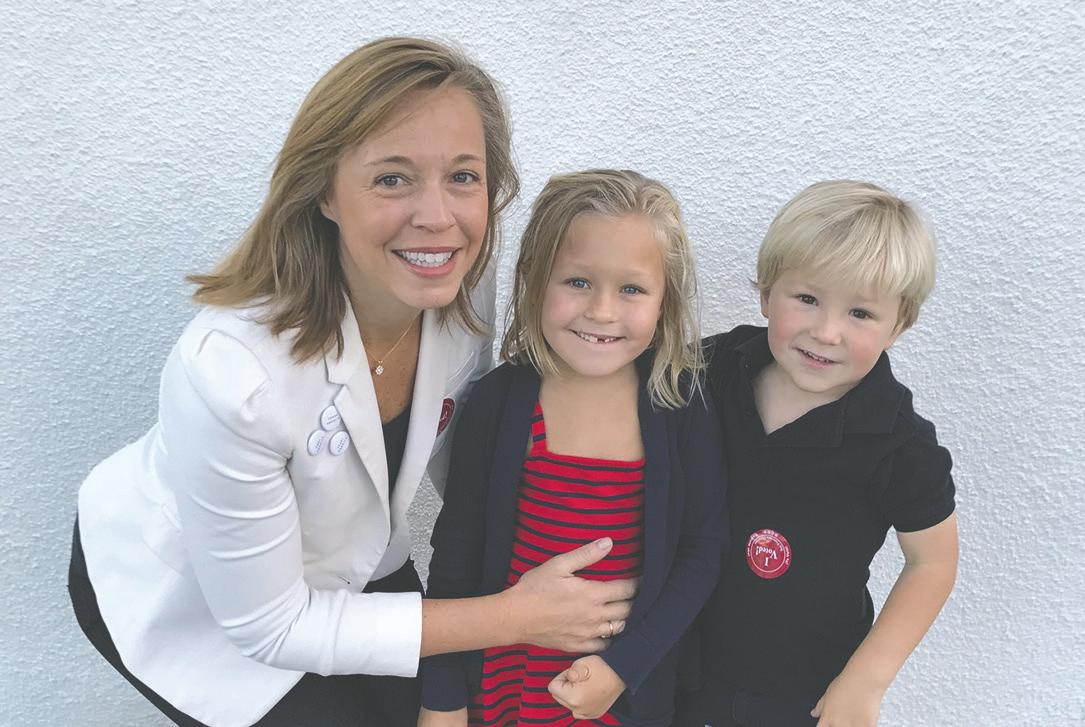 BY STACEY DELO
BY STACEY DELO
It’s 8:19 a.m. We’re hustling to get out the door.
If you walk past our house around this time you’ll hear my morning battery of questions: “Where are your shoes? Do you have your backpack? Please don’t open the umbrella in the house. We need to find your jacket. Let’s GO!”
Out the door we run, down the two blocks to Rory’s school. It’s the luckiest commute in the world, and we know it; testing the limit each day of how late we can leave the house to make it on time by 8:30 a.m. We hug and kiss and say goodbye to Rory. Then Toby and I make our way to Potrero Kids preschool.
As we walk the five blocks we talk
to everyone. We talk to many people we know; some we don’t. We have new “commuter” friends who we pass on our path and are always glad to greet. Sometimes we linger on a corner for a while, talking and playing with friends who are just starting their day. Sometimes another mom puts Toby on her back to haul him up a hill when his legs are “tired.” Sometimes when he runs so fast ahead people we don’t know ask him to hold up and wait for his mommy; thank you! Occasionally my dear friend from college – we went to school in Chicago – passes us as she finishes her morning run.
Post work and school pick up we like to drop into The Good Life for a bagel, where we run into neighbors and friends buying things for dinner. Some
days we see friends I grew up with in St. Louis who now live or work in the neighborhood.
Walking the streets provides opportunities to learn, too. We talk about reasons why someone might be living out of a shopping cart or tent; how many people live differently for lots of reasons. We talk about the diverse ways people get to work and school: by bus, train, bike, car, on foot. We watch the University of California San Francisco Benioff Children’s Hospital helicopter come and go, and talk about how it’s helping people in emergency situations. And we talk about making sure cars see us before we cross the street.
As a Midwest transplant to San Francisco, I often reflect on how I was raised versus how I’m raising my family. I like to think I bring some of my Midwest practicality to city living; I don’t pay $9 for avocado toast when I can make it myself. I have a daily
reminder of my Missouri roots thanks to living on Missouri Street. Did I grow up with more space to live in? Yes. Did we curse as much growing up over trying to find parking? No. Do I miss snow days? Yes. Did I walk to school or to the grocery store? No.
And that’s really the heart of why I choose to raise my family here. City living has brought so much more to me and my family, but I’ll forever cherish these days of walking our neighborhood with my little people; days made richer by the people we see.
Stacey Delo is the founder of Maybrooks, a career resource for moms. She lives with her family on Missouri Street. “Why I Choose to Raise My Family in San Francisco” is the brainchild of the Potrero Residents Education Fund, a nonprofit committed to helping create a stronger, more vibrant San Francisco by ensuring that families from a diversity of income levels raise their children in the City. Submit your story to editor@potreroview.net.


and collaboration. The designers have chosen materials which aim to match Dogpatch’s scale, textures, colors and distinctive character. The developer will be seeking Leadership in Energy & Environmental Design Gold certification, with a green roof to collect storm water runoff, energy efficient lighting fixtures, water efficient plumbing and shower facilities to support bike commuters.
Last year, UCSF created the Dogpatch Community Task Force to address community concerns and potential impacts of university satellite projects in Dogpatch, specifically the Child, Teen and Family Center and proposed graduate student housing for three properties at 560, 590 and 600 Minnesota Street. The Task Force consists of representatives from the Dogpatch Neighborhood, Dogpatch Business, Potrero Boosters Neighborhood, and Potrero Dogpatch Merchants associations, as well as the Dogpatch Northwest Potrero Green Benefit District. Several meetings have been held to allow community stakeholders an opportunity to voice their opinions about the projects. UC has a policy requiring its campuses to cushion development impacts by being responsive to community concerns.
Neighborhood issues raised at Task Force meetings have been largely related to the building’s design and
location. “I question the impact of a psychiatric facility standing alone away from the professional community it is professed to be serving,” stated one EIR commenter. “…since both professionals and patients will be located away from the building, they will all have to travel further distances…You are not integrating into the neighborhood; you are taking it over!”
According to John Loomis, Dogpatch resident and professor of architecture and design at San Jose State University, community members view the Center as UCSF’s “trojan horse” for further development in the neighborhood. Dogpatch’s northern section, including the vicinity of 2130 Third Street, was designated a Life Sciences and Medical Special Use District by the City in 2008, facilitating UCSF uses pertaining to healthcare, research and biotechnology. The District defines medical and life science laboratory activities as a “principally permitted use,” which are exempted from certain zoning requirements.
“Given the corrosive effect UCSF has had in the Mt. Parnassus, Laurel Heights and Mt. Zion neighborhoods, the fear is that the Life Science and Medical Special Use District extends the UCSF prerogative to do whatever they want and turn Dogpatch into Medpatch,” stated Loomis.
According to Loomis, the Center’s original vision consisted of a friendly, approachable, low-scaled building, instead of one with an institutional
December
1,961
766
Individuals used the adult emergency shelter system for one or more days.
Number of clients on the shelter waitlist, of which 192 were women, 574 men.
feel. The current project design is massive, he said, and doesn’t achieve the intended neighborhood feel. Last year, representatives of UCSF and the developer presented an updated design to the community, which Loomis felt didn’t adequately address the issues.
“The overall configuration and massing remained unchanged,” he said. “The Tennessee Street elevation continued to loom high over the Dogpatch Historic District Victorian houses across the street. There were unconvincing gestures as to surface and ground level treatment. And there was a flying exterior terrace soffit that seemed to have been cut and pasted from Benioff Children’s Hospital.”
YOUTH CLINIC from front page
income mothers. Today, its overarching mission is to end childhood poverty by helping clients secure permanent housing, teaching prenatal classes, providing postpartum support and training community health workers. Although prenatal support is a core function, HPP’s services extend to job training and an in-house computer technology center. HPP isn’t affiliated with UCSF, but hosts training sessions for midwives that work at the University.
“The HPP board approved moving forward with the co-location of New Gen within HPP with the stipulation that we secure five years of budgeted operating deficit and renovation costs prior to breaking ground,” Jackson stated. “We estimate that to be $2.5 million and we have an incredibly tight timeline to meet that goal: May 30! But, we are going for it, and hopeful that there are many people who care about New Gen’s mission so that we will succeed.”
group, consisting of representatives from UCSF and the Department of Public Health, as well as community members, is cultivating potential donors and funding sources. In the interim, the HPP board is making final determinations regarding the financial feasibility of the partnership.
HOMELESS from page 3
Public Health, San Francisco Police, and Homeless departments – will do a better job of managing the neighborhood externalities that can be created by vagrancy, including crime, hypodermic needle litter, and (vocal) assaults on passersby. How that’d be achieved and measured, other than an increased focus on mentally ill individuals, was still being thought through. Certainly not, Kositsky said, through sanctioned and better managed encampment zones, as the city of Seattle has adopted.
The View asked Kositsky whether Mayor Ed Lee was onboard the notgetting-to-zero homeless policy. He said he was; that the mayor’s dedication was to reducing homelessness to the extent possible, not necessarily eliminating it. Kositsky did indicate that a report will be published next month outlining what efforts would need to be taken, and funds spent, to comprehensively tackle homelessness. It seems likely that, under our current political leadership, that study will be quickly shelved. Or perhaps, more suitably, distributed to the homeless to use as pillows to shield their heads from the hard sidewalk they will remain on for some time to come.
RESEARCH from page 5
31
80
Number of people moved into housing from shelters/streets (Despite numerous attempts by the View over several months the City has not provided this information.)
Average wait time for a shelter bed (in days).
Individuals were provided transportation outside San Francisco to friends or family who agreed to provide them housing upon arrival. (Homeward Bound).
January
1,973 837
? ?
31
68
Individuals used the adult emergency shelter system for one or more days.
Number of clients on the shelter waitlist, of which 240 were women, 597 men.
Number of people moved into housing from shelters/streets (Despite numerous attempts by the View over several months the City has not provided this information.)
Average wait time for a shelter bed (in days).
Individuals were provided transportation outside San Francisco to friends or family who agreed to provide them housing upon arrival. (Homeward Bound).
Source: Department of Homelessness & Supportive Housing
The potential partnership’s benefits are envisioned to extend to both entities. HPP isn’t a clinic; with the addition of New Gen, clients that come to research jobs on the internet or attend a yoga class will be able to access various health services. A youth who visits New Generation for a pregnancy test can attend a HPP prenatal class, if needed.
One of the goals of co-locating is to preserve New Generation as a separate, designated, place for youth. Tsao Design, an architecture firm, is designing a physical space that’s both connected and separate from HPP. It’s likely that the existing names, New Generation and Homeless Prenatal Program, will be retained.
“The great benefit of co-locating within HPP is that our missions are synergistic; HPP’s mission is to break the cycle of childhood poverty, and family planning is a key contributor to future economic stability,” offered Jackson. “HPP offers services to all low-income families with job training, computer skills, financial skills and housing assistance. Both sets of clients will benefit from this co-location. New Gen’s patients can access the many resources at HPP, and HPP’s clients can seamlessly access family planning services.”
New Generation’s lease ends in September; UCSF is expected to cease financial support by July. A working
“nor any of my colleagues believe that parking is more important than the work” done by UCSF, expressed her disappointment, acknowledging that while reading the Development Agreement it “caught me by surprise that, despite three years of negotiation between the City and UCSF, we still hadn’t solved for the issue of parking management, and that the parking management plan was not going to be required until, essentially, the close of escrow or start of construction. So that did not rest well with me, the fact that we were going to try to solve this problem later on down the road.” She suggested that UCSF’s $10 million contribution might be increased, but didn’t press the point.
District 11 Supervisor Ahsha Safaí and District 6 Supervisor Jane Kim requested that the Department of Public Health report back to the Board within 30 and 90 days to discuss parking solutions and associated financing. Kim also asked City Controller Ben Rosenfeld to place on Budget and Finance Reserve the $10 million contributed by UCSF for the garage addition, to ensure “that the Budget Committee gets a presentation of the DPH’s spend-down of the $10 million before they spend it down.” This would “allow the public and our constituents to give feedback on components that might be missing,
For 47 years, The Potrero View has offered news about important neighborhood goings-on, including what’s happening in our schools, with local merchants, families, parks, and cherished personalities. We’ve even occasionally broken larger stories, about the closure of the Hunters Point and Potrero power plants, new parking regulations, and land use changes. We’re still here, even while the San Francisco Bay Guardian and other publications aren’t, and the San Francisco Examiner is no longer a daily.
The View will only survive into the future with your help Which is why we’re asking you to donate generously to the paper. Please take this opportunity to show your appreciation for community news by doing one or more of the following:
SUBSCRIBE! For $48 you’ll receive the paper every month in your mail box. How exciting!
DONATE $68, and receive a copy of The Daddy Handbook, by View publisher Steven J. Moss, a perfect gift for fathers and would-be dads!
DONATE $88, and receive a “life and death bundle,” The Daddy Handbook, a celebration of fatherhood, and Last Things: A Graphic Memoir of ALS, a gripping and deeply personal account of how Marissa Moss grappled with the death of her beloved husband.
DONATE $100, and receive all of the above plus our deep gratitude!

YES! I love the View, and would be delighted to help support it with my gift of: $48 $68 $88 $100 Some other meaningful amount $
Please send: my subscription The Daddy Handbook Last Things Your Love to:
FULL NAME
ADDRESS
CITY STATE ZIP CODE
EMAIL ADDRESS
Enclosed is my check. (Please send, along with this form, to: The Potrero View, 2325 Third Street, Suite 344, San Francisco, California 94107)
I am sending my gift via PayPal (office@potreroview.net).











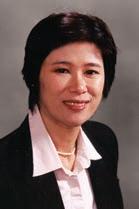

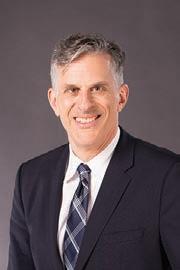


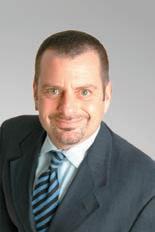

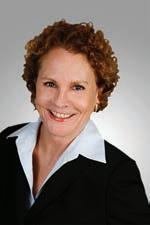
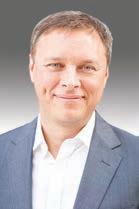


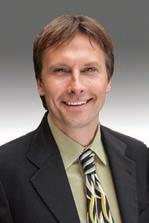
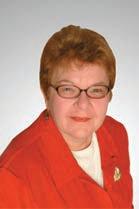

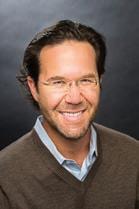

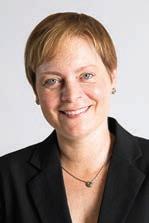



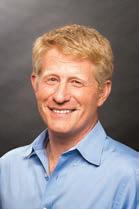
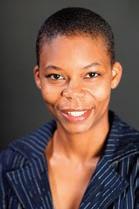


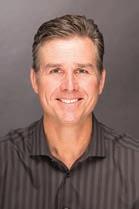

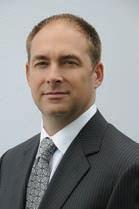
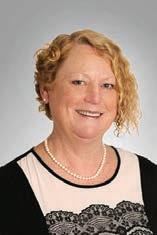
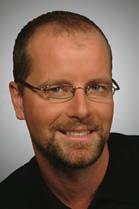

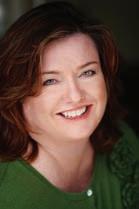

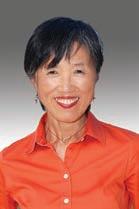
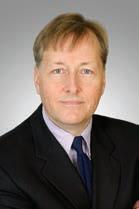
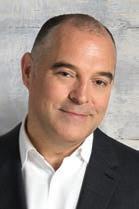
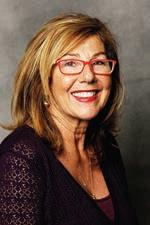
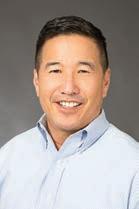
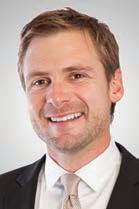

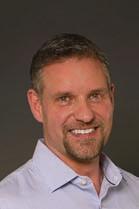


Outside the Yankee Pete zipped up his jacket against the cold. The bar’s smoky haze seemed to have leaked outside. Grey wisps of fog swirled slowly around, like ghosts searching for their grave. He stood in front of the saloon, hands in pockets, waiting, hoping that the electronic voice that’d summoned him would appear, preferably in the shape of an attractive woman. He didn’t want to go back to his apartment.
The door burst open, spilling out a blast of noise, along with two elderly gentlemen dressed in Golden State Warriors attire. They nodded at Pete, and stumbled away, one of them clutching his car keys in front of him as if was a flashlight. Pete glanced at their backs, stepped into the street, and headed in the opposite direction, no destination in mind.
He wandered up the hill, eyeing the sidewalk. “Step on a crack,” he whispered to himself, elongating his stride to avoid the fissures. He stopped in front of a series of sidewalk squares. Each sported a while dot, indicating that the city was demanding that the adjacent property owner replace them. Pete stooped down to examine the rectangles.
“Look fine to me,” he said. “Maybe some news here; municipal authorities shake down property owners.” He got on his hands and knees, peering through the dim street light, brushing at the cement, his fingertips lingering on divots and fissures. “Could be a Pulitzer Prize-winning investigation; dots connected to city’s concrete cash,”
he bark-chuckled,
Pete counted the dots. “Eight,” he said. “At least a thousand dollars’ worth of work; definitely break my back.” He got up, brushed his hands on his pants, and continued walking, now intentionally stepping on cracks. “Step on a crack, city gets you back,” he sang to himself.
At the top of the hill Pete turned left, towards the 18th Street Interstate 280 overpass. The fog thickened; unusual for Potrero Hill, which was normally shielded by Twin Peaks. He wandered to the guard rail, stood looking south at the trickle of traffic as it swept by, and sighed.
Behind him Pete heard a squeal of wheels. Turning towards the sound, he was blinded by headlights beaming from a vehicle fast-exiting the Mariposa Street freeway off-ramp. He shielded his eyes with a raised arm; the car was coming right at him.
“What the!” Pete yelped. The vehicle slammed into the guardrail, its passenger side inches from Pete, and flew off the bridge, a grimacing hairless man at the wheel. As the car swept by Pete pivoted, bobbed twice, and then fell, following the chunk of metal to the asphalt below.
Each month the View publishes a chapter from Gold , a serialized tale of politics, capitalism, and corruption in San Francisco. Previous chapters can be found on the paper’s website, www. potreroview.net. Advertisers or supporters interested in sponsoring future installations, or publishing the final manuscript, should contact editor@ potreroview.net.
project to generate $50 million in impact fees to support further municipal transportation infrastructure projects.
last year, almost triple the 2011 total. Over the past 10 years, the center has seen the average number of daily calls rise from 1,224 to 1,780. National standards advise that 90 percent of emergency calls be answered within 10 seconds, a benchmark San Francisco hasn’t met since March, 2012, falling to a low of 74 percent last December. Non-emergency calls have followed the same arc but, whereas national goals advise 80 percent be answered within one minute, the City was already lagging at 70 percent six years ago, and has since fallen to 55 percent.
On a brighter note, when it comes to emergency medical response timethat is, after the request comes through - the City is meeting designated goals in getting an advanced life support (ALS) team and ambulances to the scene. The desire is to see ALS arrive within seven minutes, ambulances within 10 minutes, 90 percent of the time. The City exceeded that in the past year and a half, after seeing a low point of 74 percent for ambulances in the summer of 2014.
Police response to high priority calls, meanwhile, dropped in 2016, from an average of 4:55 to 2:07 between fiscal years 2015 and 2016.
An increased municipal employee population will affect future pension and retiree benefits expenditures. Municipal pensions have been a hotly debated topic for the past decade. It’s unclear whether the City can even meet current demands. Numbers are tight enough that last fall Controller Ben Rosenfield filed a suit against the retirement board to stop cost-of-living increases for 8,300 long-term retirees. In 2011, voters passed Proposition C, which halted those increases until the retirement fund is fully funded.
valuation. Due partly to steps taken over the past few years that require higher employee contributions, the Retiree Health Care Trust Fund’s resources jumped 57 percent last year and shows assets of $114.8 million.
The Controller’s Office has seen one of the largest jump in employees, from averaging less than 200 in recent years to 253 in 2016. Rosenfield explained that higher staffing levels are needed to implement a new financial system. The last one was installed in 1980, and hasn’t been upgraded since 1997.
As for the other highest paid employees last year, Coaker was followed by two assistant medical examiners, Ellen Moffatt and Amy Hart, who grossed $397,754 and $345,100 respectively.
Other top earners included former Police Chief Greg Suhr, $328,355, Fire Chief Joanne Hayes-White, $327,774, and the chief administrator of San Francisco General Hospital, Susan Currin, $338,390.
RESEARCH from page 18
things that they’d like strengthened, or even prioritization of which parts of the plan get funded first, because clearly the $10 million will not fund the entire plan.”
transit can be bolstered to accommodate growth. Residents supported the developer’s plans to provide affordable space for artists in a City where many have been displaced, and appreciated that the project would provide housing, as well as jobs. Agnos remarked that the amount of community investment incorporated into the project through the high allotment of affordable housing, publicly accessible spaces and artists’ studio space is unprecedented in modern San Francisco planning history.
A recurring complaint was that project’s heights and scale would block views, including that of Irish Hill near 22nd Street and Illinois Avenue. In an attempt to assuage concerns about heights, the development team created “before” and “after” simulations of view corridors for 20th at Mississippi Street, 22nd at Wisconsin Street, and 20th Missouri Street. The simulations suggest little change to current views relative to existing structures, such as a 90-foot building, part of the Pier 70 Union Iron Works Historic District, which’ll be rehabilitated. The staggering of heights between 50 and 90 feet would entail positioning taller structures on lower elevations, to mitigate negative impacts to the view corridor.
Forest City will fund transportation improvements, like shuttle and bike sharing stations, and expects the
“The community’s vision is to create a place that’s a natural extension of the neighborhood,” Sylvan added. “That means a vibrant waterfront, spaces to do creative things with the arts, design, manufacturing and food, community activities for everyone, and neighborhood services people use every day. A big opportunity at Pier 70 is to open up the waterfront and create access to the Bay where there has not been for more than 100 years.”
to those with construction fatigue, is also at a high point. In fiscal 2016, 721 blocks of streets were paved; in the previous nine years, the amount ranged between 243 and 521.
Muni, meanwhile, has struggled to keep up with timetables. While 99 percent of scheduled busses did arrive in 2016, a 10-year-high that’s likely due to 700 new drivers being hired over the past two years, they’re not necessarily showing up on time. During the last four years the percentage of busses that come within a window of one-minuteearly-to-four-minutes-late dropped to less than 60 percent. From 2007 to 2011, the figure was in the high 70s.
One area that’s not keeping up with staffing demand is the 911 call center, which accrued $351 million in overtime
In 2015, however, courts limited the statute to those who retired before 1996; the year voters first approved cost-of-living increases. Last summer, the retirement board announced it’d honor pension increases for those retirees as well, leading to Rosenfield’s suit.
Rosenfield told the View that, “in the big picture the City is performing better than most local governments.”
While the retirement fund isn’t fully funded, as it was pre-recession, levels recently have been between 85 to 90 percent, which Rosenfield said wasn’t worrisome. That the budget is forecast to slip into the red in the next five years could prove problematic, however. “We are seeing an $800 million structural imbalance. About one-quarter of that is driven by pension,” he said.
Equally perilous is that the City has been assuming an annual 7.5 percent rate of return on pension investments, while in the last two years the fund earned just 3.9 percent and 1.3 percent respectively. As of last June, the liability for the San Francisco Employees’ Retirement System (SFERS), overwhelmingly the largest of the City’s six pension plans, reached $2.16 billion, an increase of $496 million from the previous year. Ironically, the top earning city employee last year was William Coaker Jr., SFERS chief investment officer, at $512,485.
“In my mind, pension is more of a concern than retiree benefits right now,” said Rosenfield. That’s despite the fact that the benefits liability was calculated at $4.21 billion in its last
District 9 Supervisor Hillary Ronen insisted on “a motion to amend the ordinance to reflect that UCSF will permanently maintain 130 spaces for its [ZSFG-based] faculty and staff at the Mission Bay campus to offset the 130 spaces that will be removed from ZSFG’s campus.” The idea of using Mission Bay parking for UCSF’s ZSFG workers, with a shuttle traversing the distance between, was suggested by UCSF as a temporary solution for the construction period only.
Parking challenges were counterbalanced by the desire for the research facility, as affirmed in testimonials by doctors and ZSFG administrators. Dr. Dean Schillinger noted the importance of maintaining UCSF’s research presence at ZSFG. “Being situated in a context in which, on any given day, I can be doing my research for two and a half hours [and then] get a call from the nursing staff and run down the stairs and go across the street to the clinic and take care of my patients, provides tremendous added value in terms of efficiencies and economies of scale and really keeps us grounded in the mission.”
Dr. Jim Marks pointed out that without a research component ZSFG would lose its Level 1 Trauma Care designation, and struggle to attract top-level staff; it’s San Francisco’s only Level 1 Trauma Center. Dr. Monica Gandhi professed her belief that, in the new facility, UCSF researchers will find a cure for HIV.
District 8 Supervisor Jeff Sheehy remarked, “It is rare for a major academic research institution to devote resources to studying diseases that impact people living in poverty, people who can’t afford insurance. People talk about UCSF and all the money that has come in for research at Mission Bay, and that really tends to look at a different set of diseases than those that are found at San Francisco General.” Sheehy
For Rent
ONE-PLUS BEDROOM HOME FOR
RENT on Wisconsin and 20th streets. Features two-car garage, loft, office space with bathroom, backyard access, washer/ dryer. Available April 1; $3,750. editor@ potreroview.net; 415.643.9578.
Housekeeping
CLEANING PROFESSIONAL 28 years experience. Apartments, homes or offices and apartment buildings. Roger Miller 415-794-4411 References upon request.
Photography Consultant
Experienced photo technician, specializing in in-home/studio archiving and file management. Call 826.266.7587, for Sam.
Wanted: Truck Driver
PART-TIME TEMPORARY WAREHOUSE
PERSON / TRUCK DRIVER WANTED.
Flexible hours (Mon – Fri) moving furniture for a Dogpatch small business. Possible weekend hours. Rate of pay: TBD
· Valid CA Driver’s License
· Ability to move household goods
· Neat appearance; honest; punctual
· Ability to drive a 20 ft – 2 axle truck If interested, call Bill at 415.206.7906 (Mon – Fri) to arrange an interview.
Subscribe to the View!
Annual Subscription: $48.
Contact us at: 415.643.9578 editor @ potreroview.net advertising @ potreroview.net
CELEBRATE YOUR CHILD’S MILESTONES: The View is pleased to publish photographs and captions feting birthdays, graduations, sports achievements and the like. Send yours to editor@potreroview.net
FREELANCE WRITERS: The View is looking for writers, with fee-based compensation provided. Contact: editor@potreroview.net
YOUR CONTRIBUTIONS WELCOME: Donations of any size are appreciated to support your neighborhood newspaper. Send checks to:
View, 2325 Third Street, Suite 344 San Francisco, California 94106

MISSION BAY from page 15
and recreational possibilities.
Earlier this year, SPUR held an event at its 654 Mission Street offices to present the study to the public. Laura Tam, Brad Benson, and Peter Wijsman—representatives of SPUR, the Port of San Francisco, and Arcadis, respectively—summarized the report’s contents and answered audience questions. Tam emphasized that there “is no timeline for implementation” and that a “broad public outreach and engagement process” would have to take place before detailed feasibility studies for any particular solution could commence.
Nevertheless, Benson speculated that efforts to improve the most vulnerable points of the Mission Creek shoreline might begin in the next ten to 15 years, while larger projects—like a new waterfront or elevated Third Street—could wait until 2040 or thereabouts. Wijsman noted that cities like New Orleans and New York have demonstrated that “thinking about these solutions now is a lot less costly than doing it once a disaster has occurred.”
The Mission Creek Sea Level Rise
City and County of San Francisco Outreach Advertising
March 2017
Youth Commission
Adaptation Study is available for free download at spur.org.
RESEARCH from page 21
felt it was imperative not to postpone project approval. “Every week’s delay means that a cure for someone who gets care at San Francisco General is one week [further] away. I just think it’s really important to remember the urgency of patients who need this vital research in order to save their lives, to alleviate their suffering.”
The new research and academic building is expected to be five stories tall, with roughly 175,000 gross square feet, paid for by UCSF. According to the Final Environmental Impact Report, the “architectural style of the proposed research building has not been developed,” but the report takes note of the “prevalence of brick within the SFGH Historic District” and surmises that “the use of masonry (including brick and terra cotta) exclusively or in combination with other exterior cladding materials” would be “encouraged” during the design process.
The San Francisco Youth Commission is now accepting applications from youth ages 12-23 who would like to advise the Mayor and Board of Supervisors on the unmet needs and priorities of young San Franciscans. This is an important opportunity for young community advocates who are interested in policy, legislative and budget advocacy, and representing their communities! Youth commissioners hold afterschool hearings on youth-related legislation being considered by the Board of Supervisors and propose their own set of policy priorities each year. Applications are due April 23rd for a term beginning in August 2017. For more information, visit: www.sfgov.org/yc
The annual citywide Summer Resource Fair is coming up on Saturday, March 11 from 10am to 2pm at the County Fair Building in Golden Gate Park. The Summer Resource Fair is a free, family-oriented event that showcases the multitude of summer programs and other opportunities for young people in and around San Francisco. This year the Department of Children, Youth, and Their Families will bring in 200 exhibitors from summer programs, camps, and classes for children and youth ages 0-24. The SF Rec & Park Department will host a range of sports, arts & crafts, and other play stations, the SF Public Library will give away books, many of the exhibitors will host activities at their tables, and Play-Well TEKnologies will work with attendees to build a model of the city of San Francisco out of LEGOs! Please visit www.dcyf.org
Notice is hereby given of 6 vacancies on the AAB. Applicants must have at least 5 years of experience in the State of California as one of the following: Certified Public Accountant or Public Accountant; licensed Real Estate Broker; Property Appraiser accredited by a nationally recognized organization, or Property Appraiser certified by the California Office of Real Estate Appraisers. For additional information or to obtain an application, please call (415) 554-6778.
Californians Ages 16 and 17 Can Now Pre-register to Vote!
To pre-register to vote in California, you must be:
• A United States citizen
• A resident of California
• Age 16 or 17
To pre-register if you are 16 or 17, or register to vote if you are 18 or older:
• If you have a California Driver’s License or CA ID from the DMV visit registertovote.ca.gov
• Use a paper Voter Registration Card from the Department of Elections, City Hall, Room 48
• Call (415) 554-4375 and the Department of Elections will mail you a Voter Registration Card
Be sure to update your voter registration every time you move, change your name, or want to change your political party preference. Visit sfelections.org. The City and County of San Francisco encourage public outreach. Articles are translated into several languages to provide better public access. The newspaper makes every effort to translate the articles of general interest correctly. No liability is assumed by the City and County of San Francisco or the newspapers for errors and omissions.



